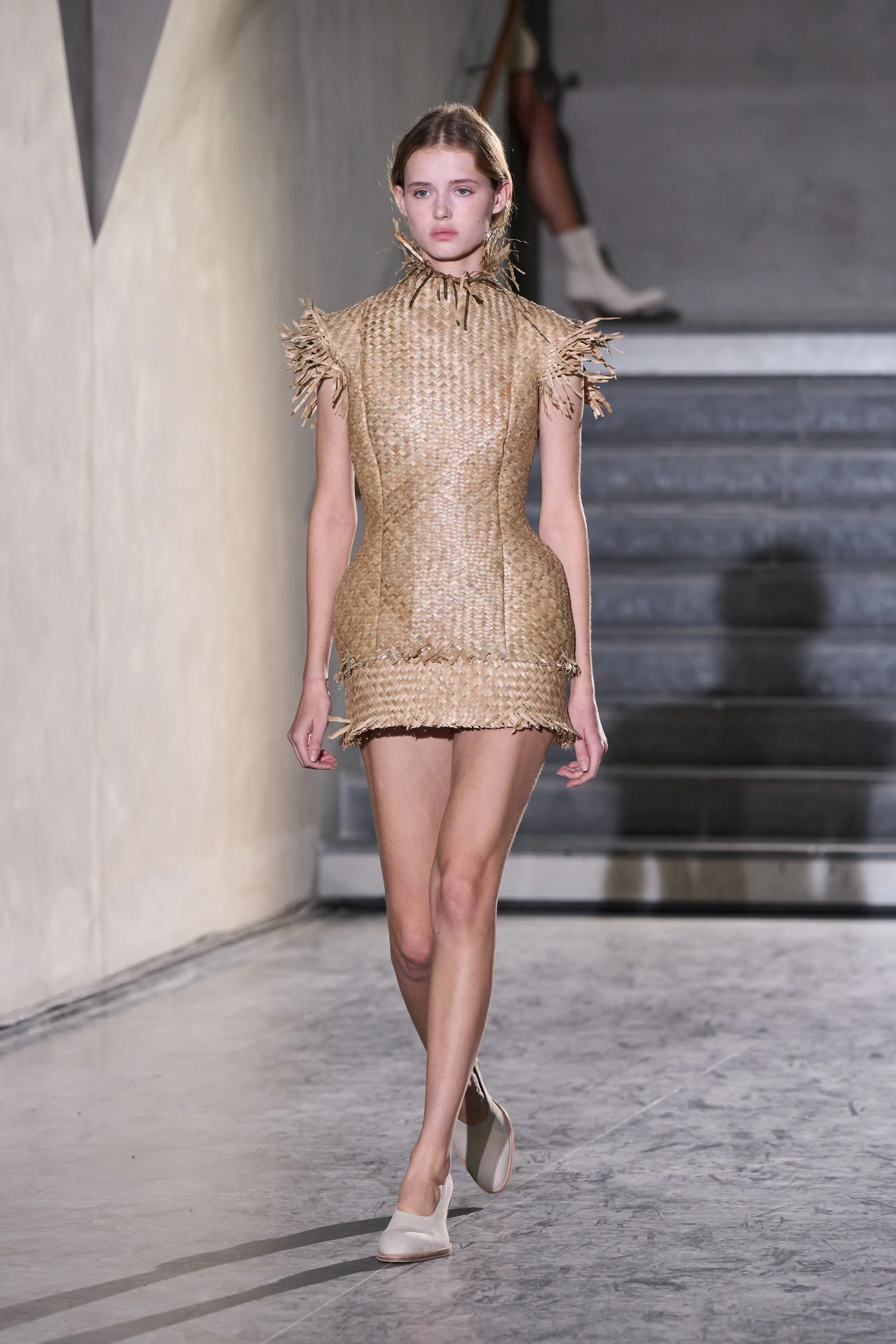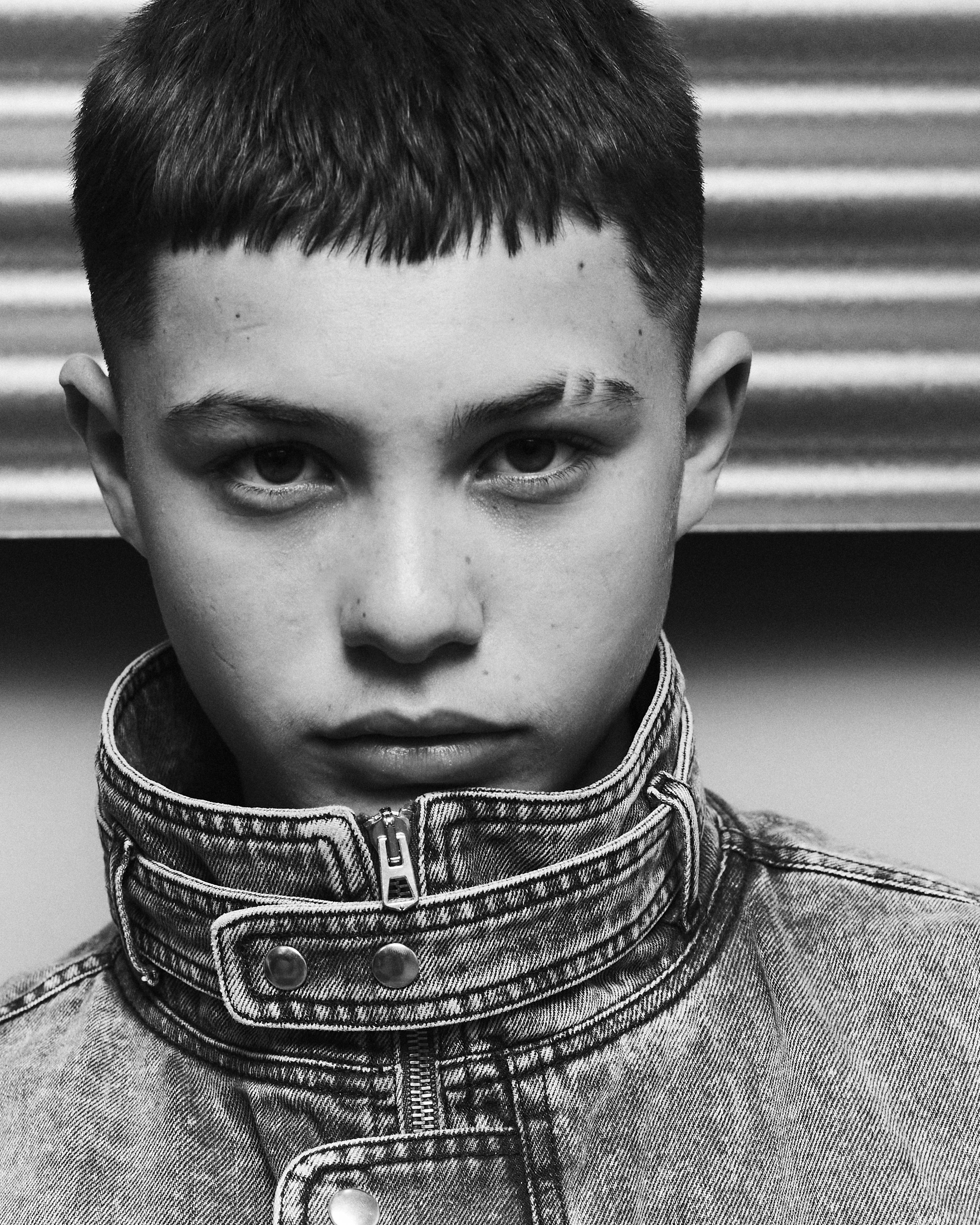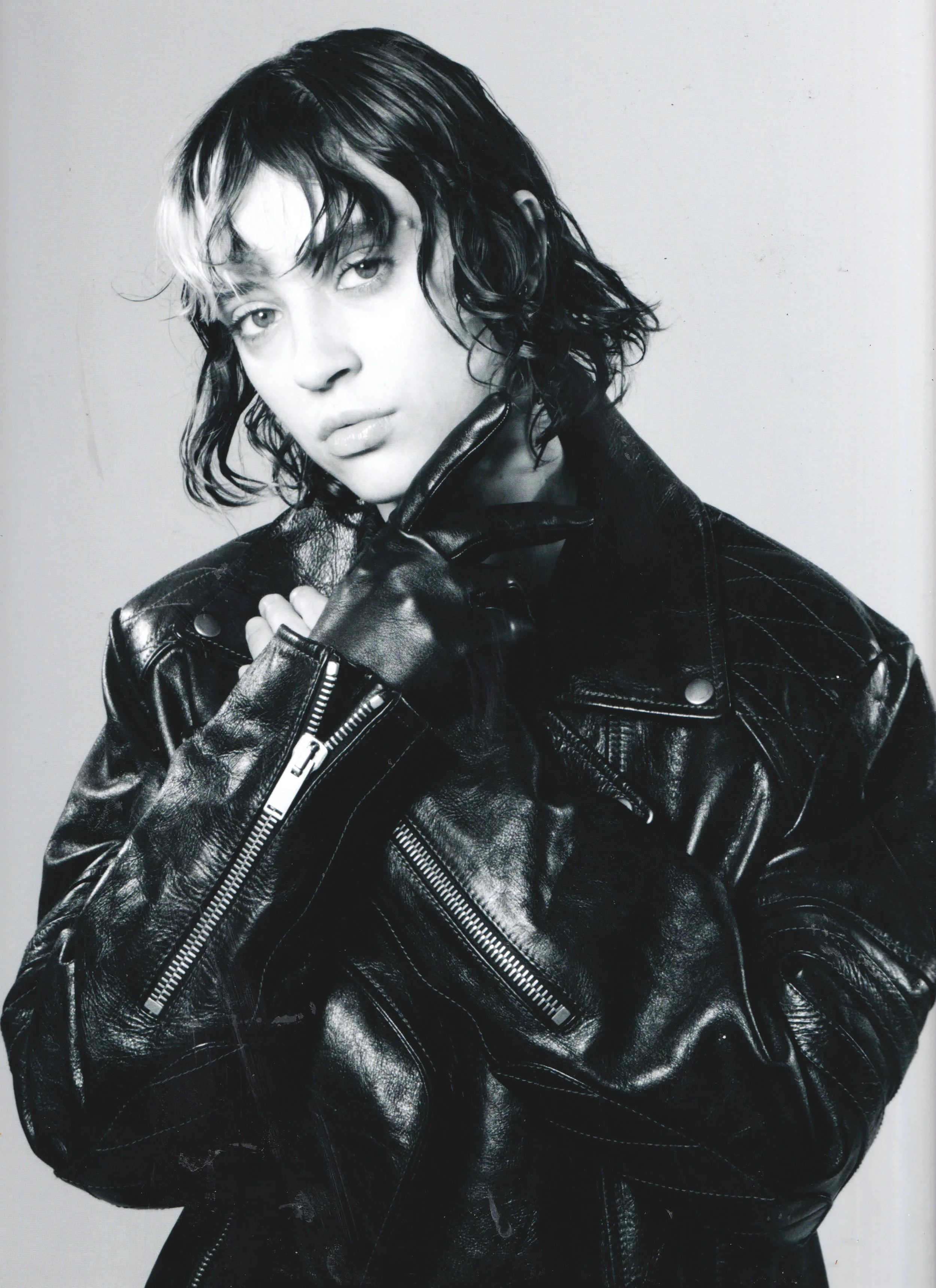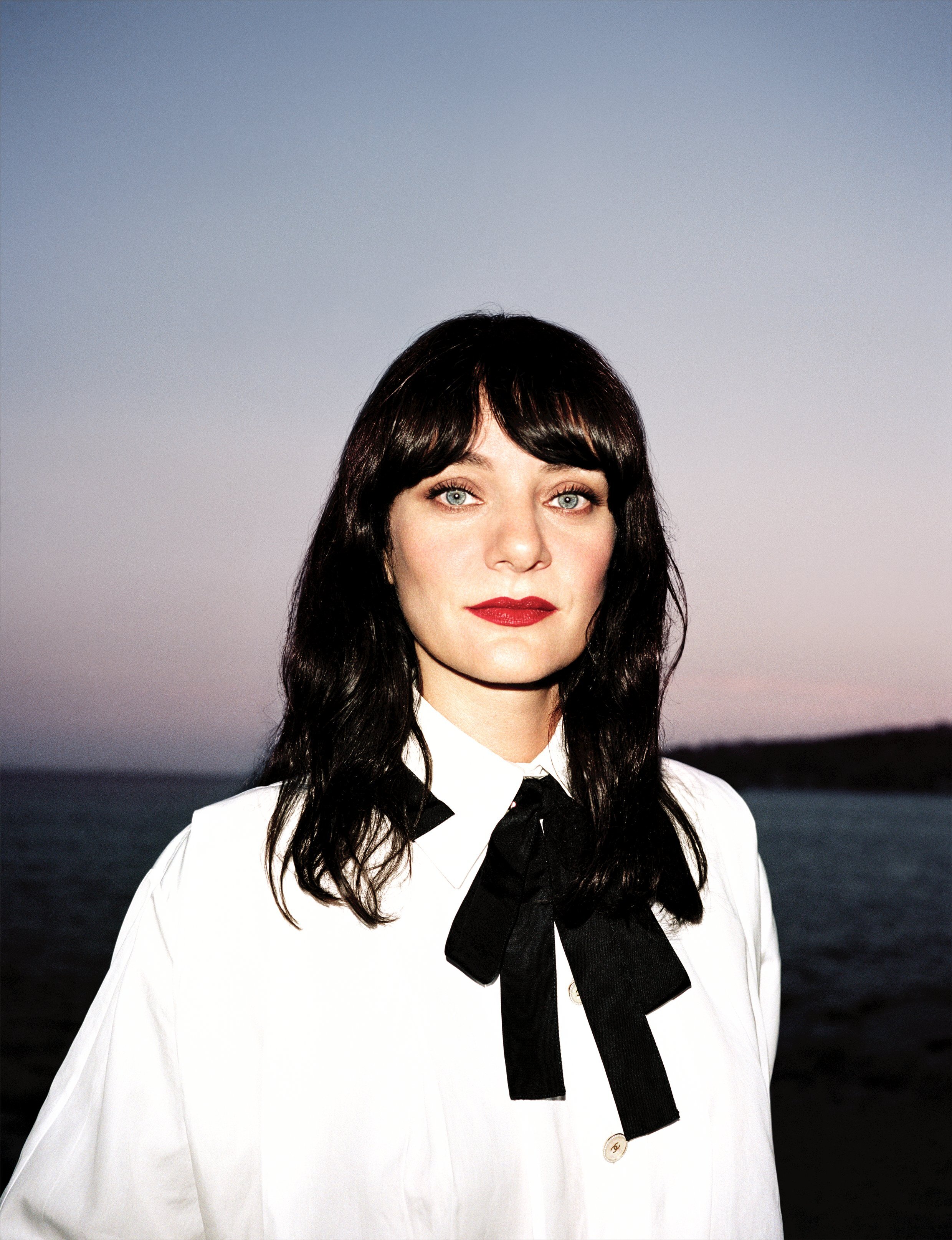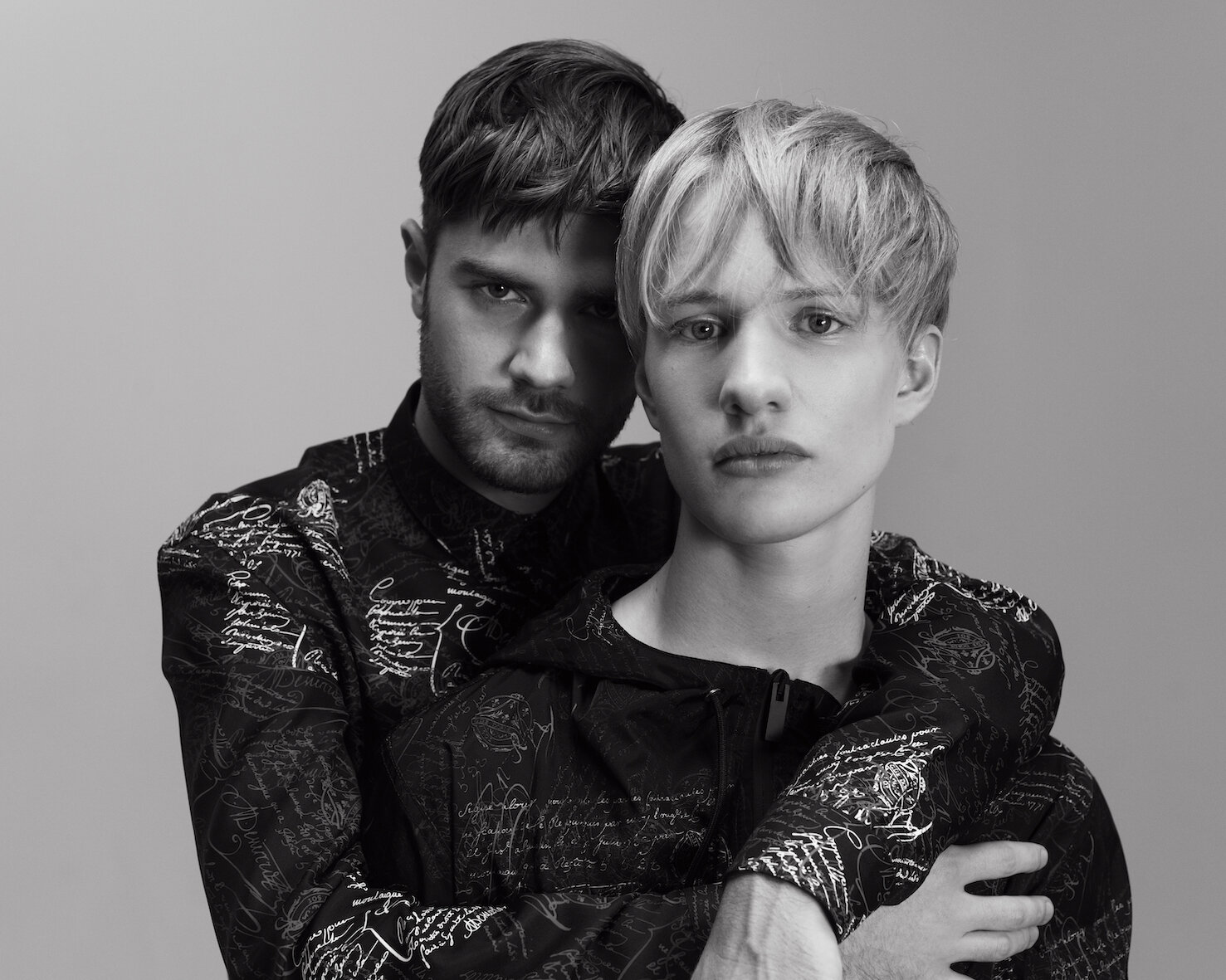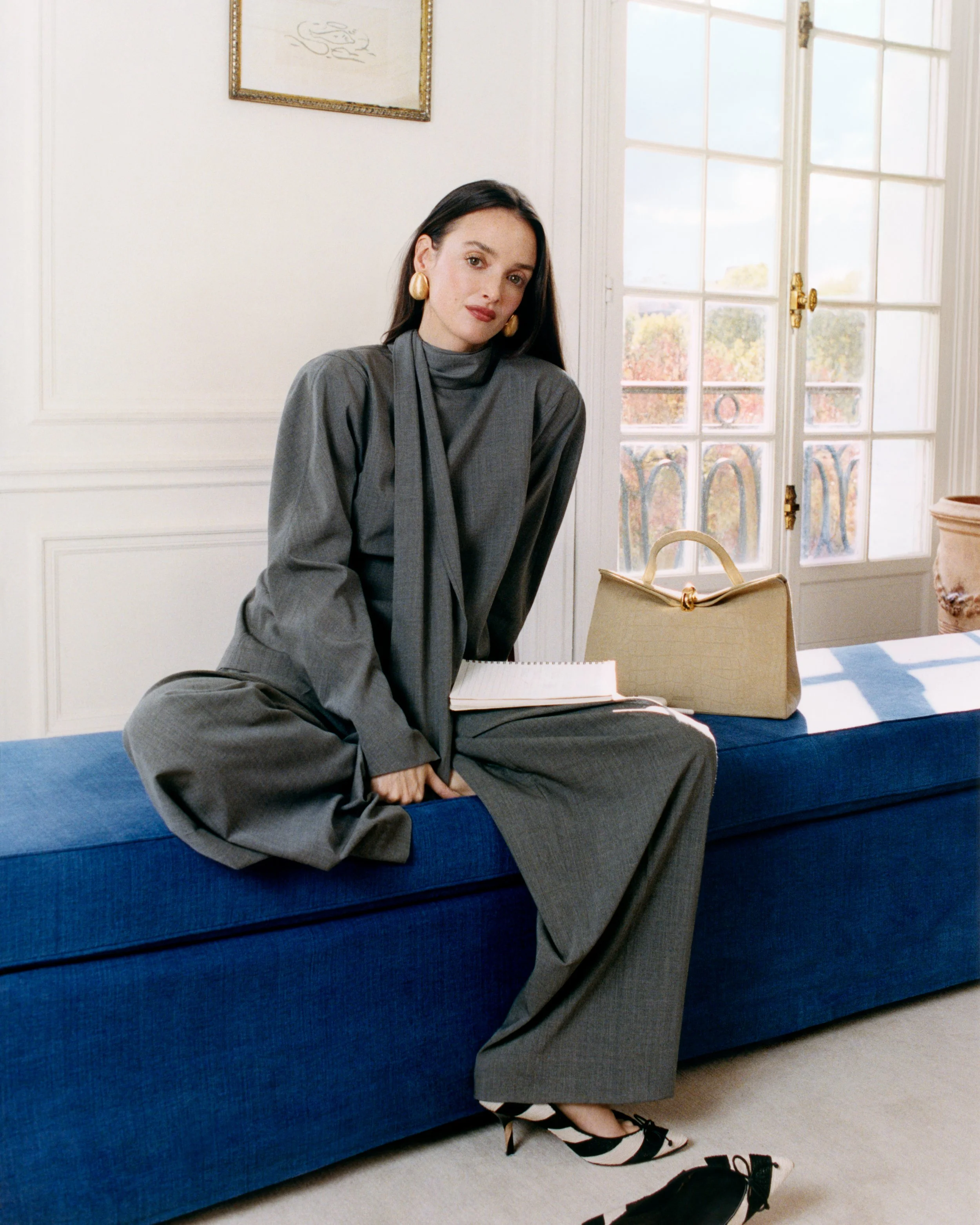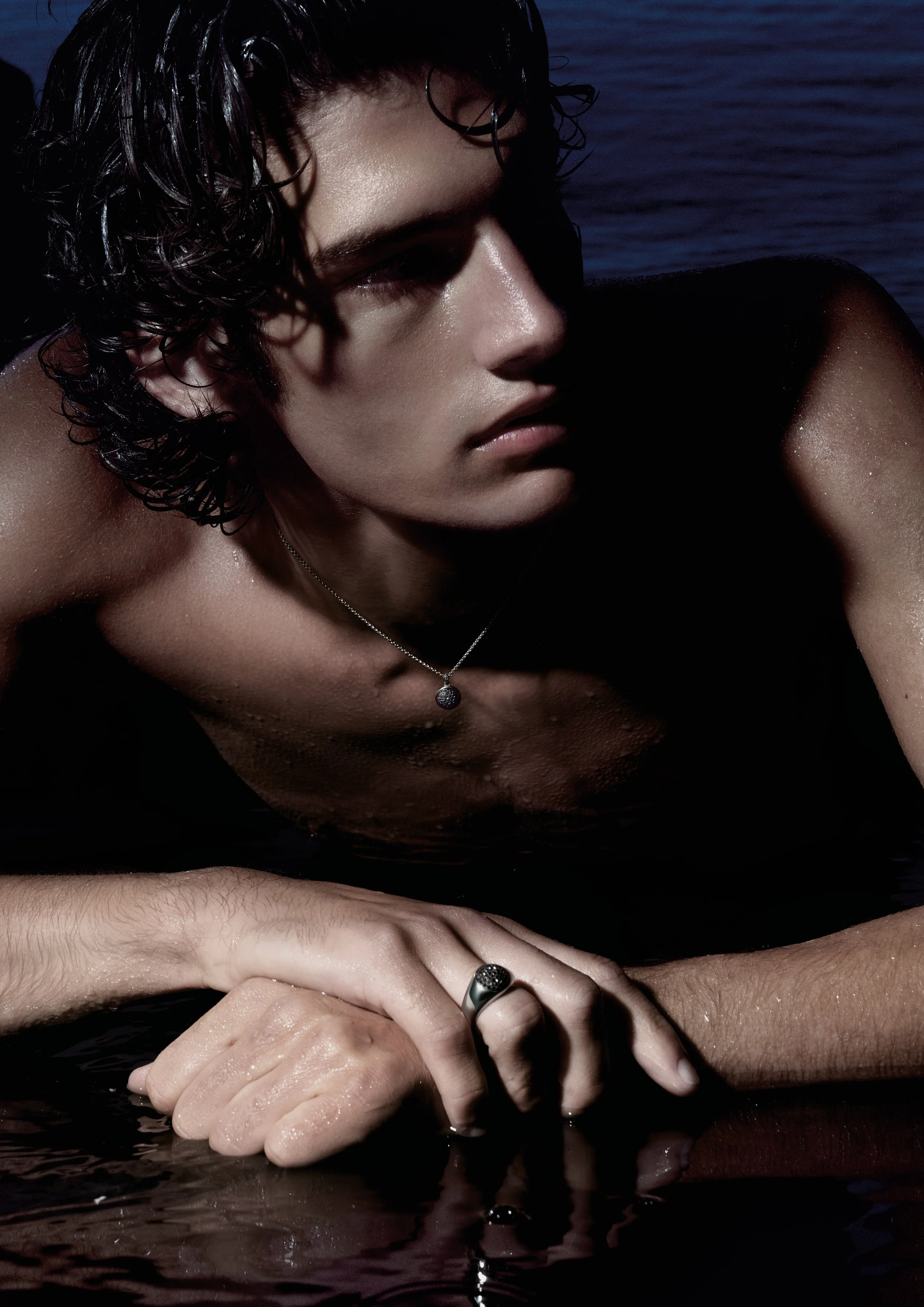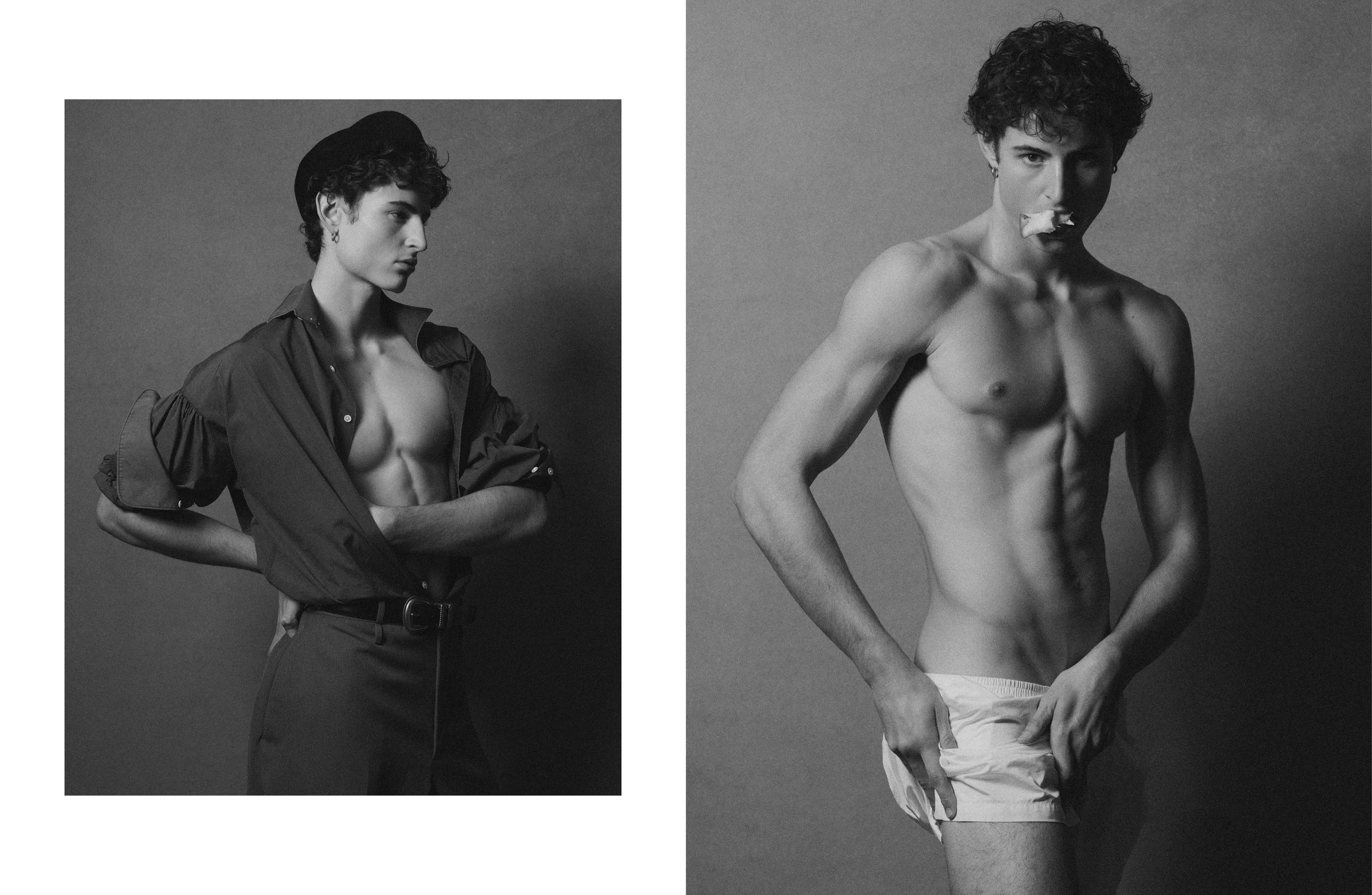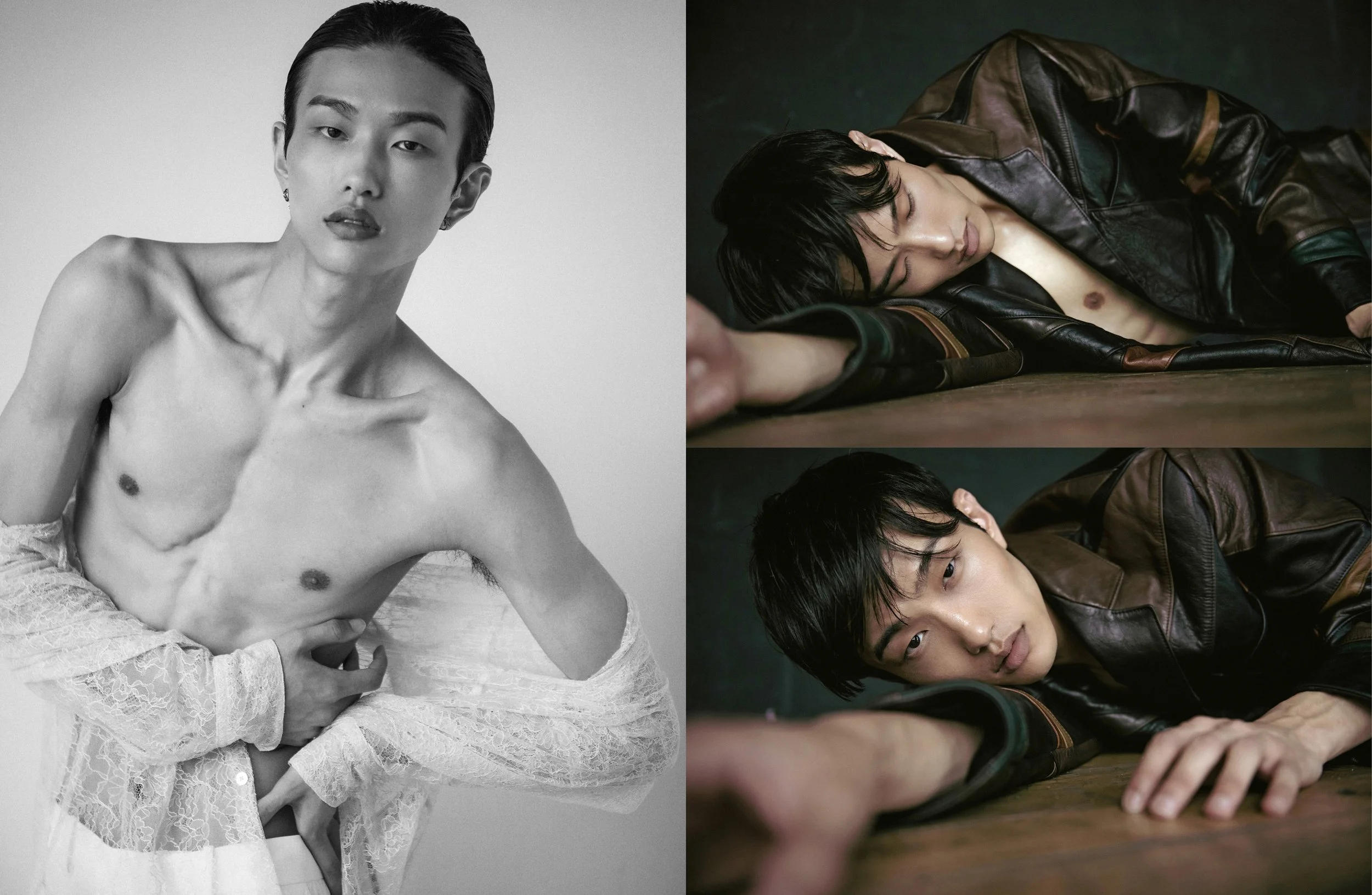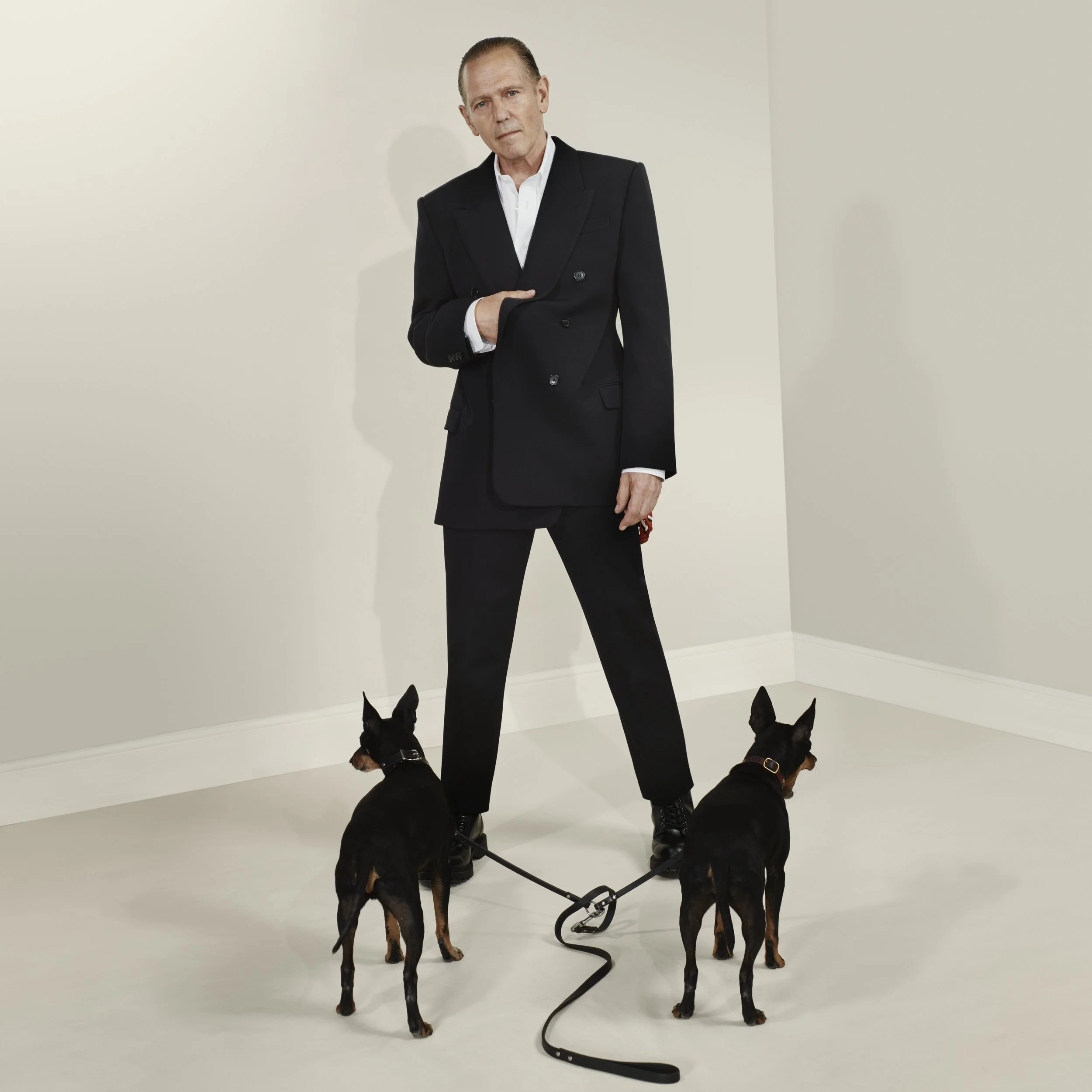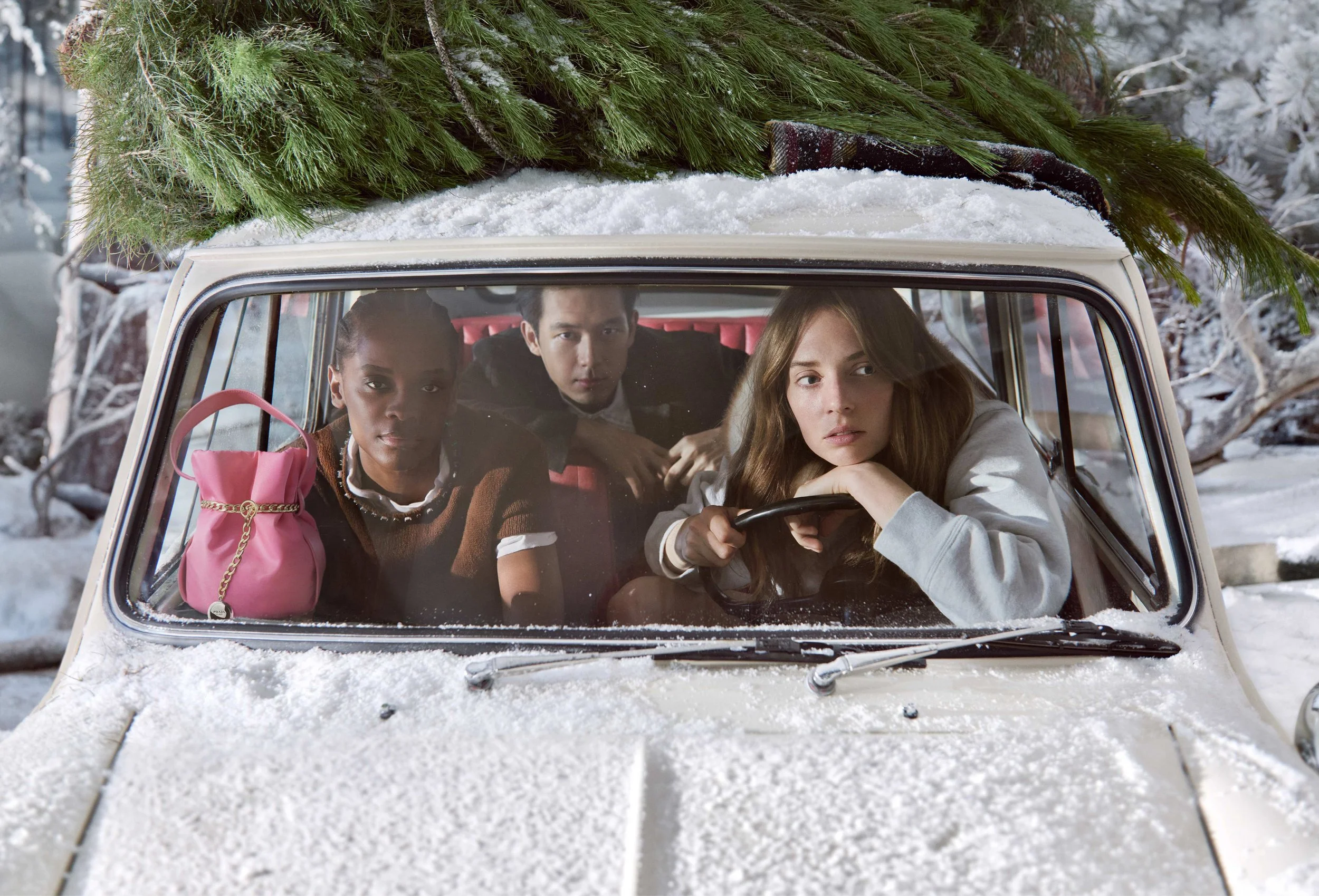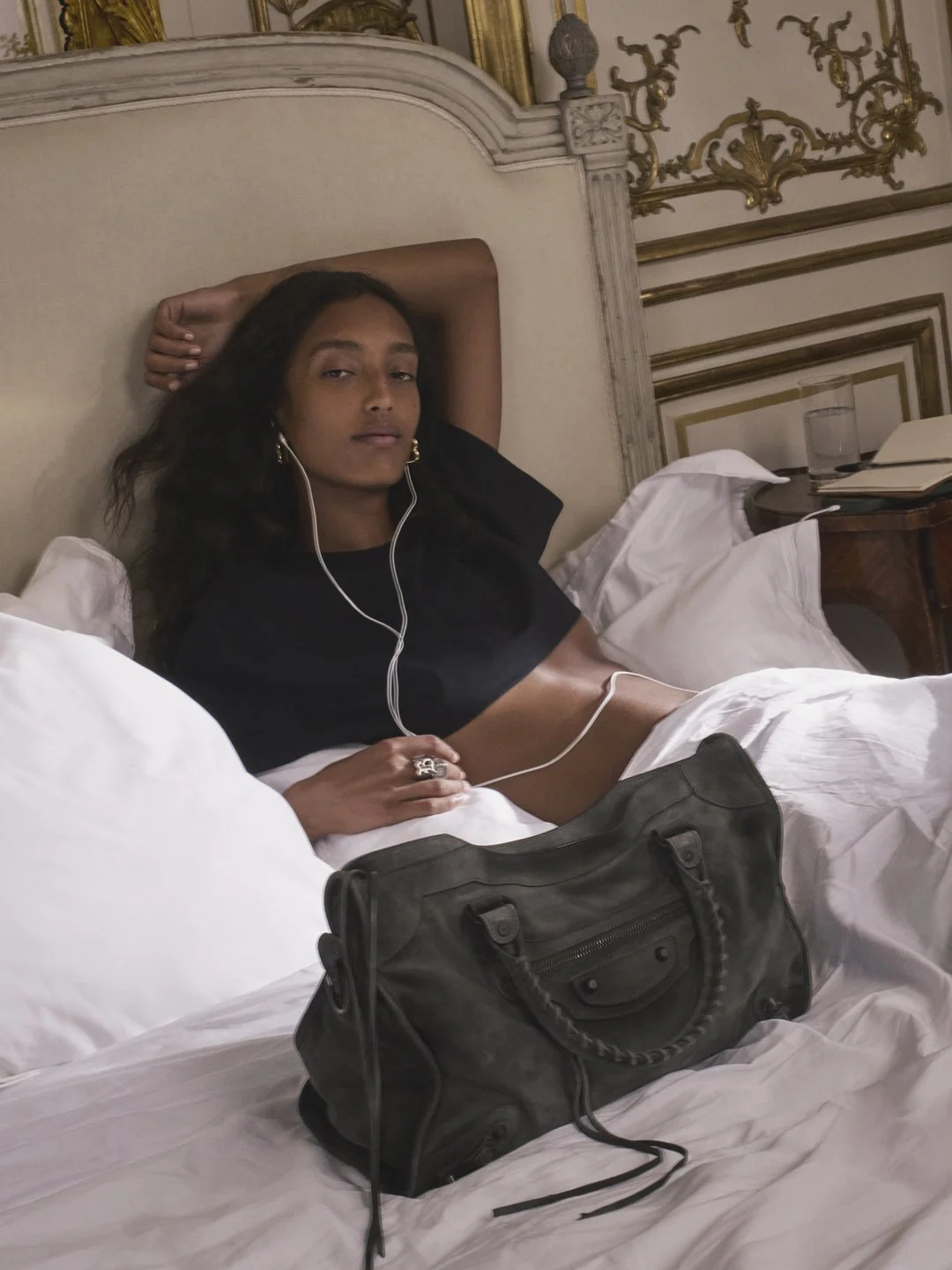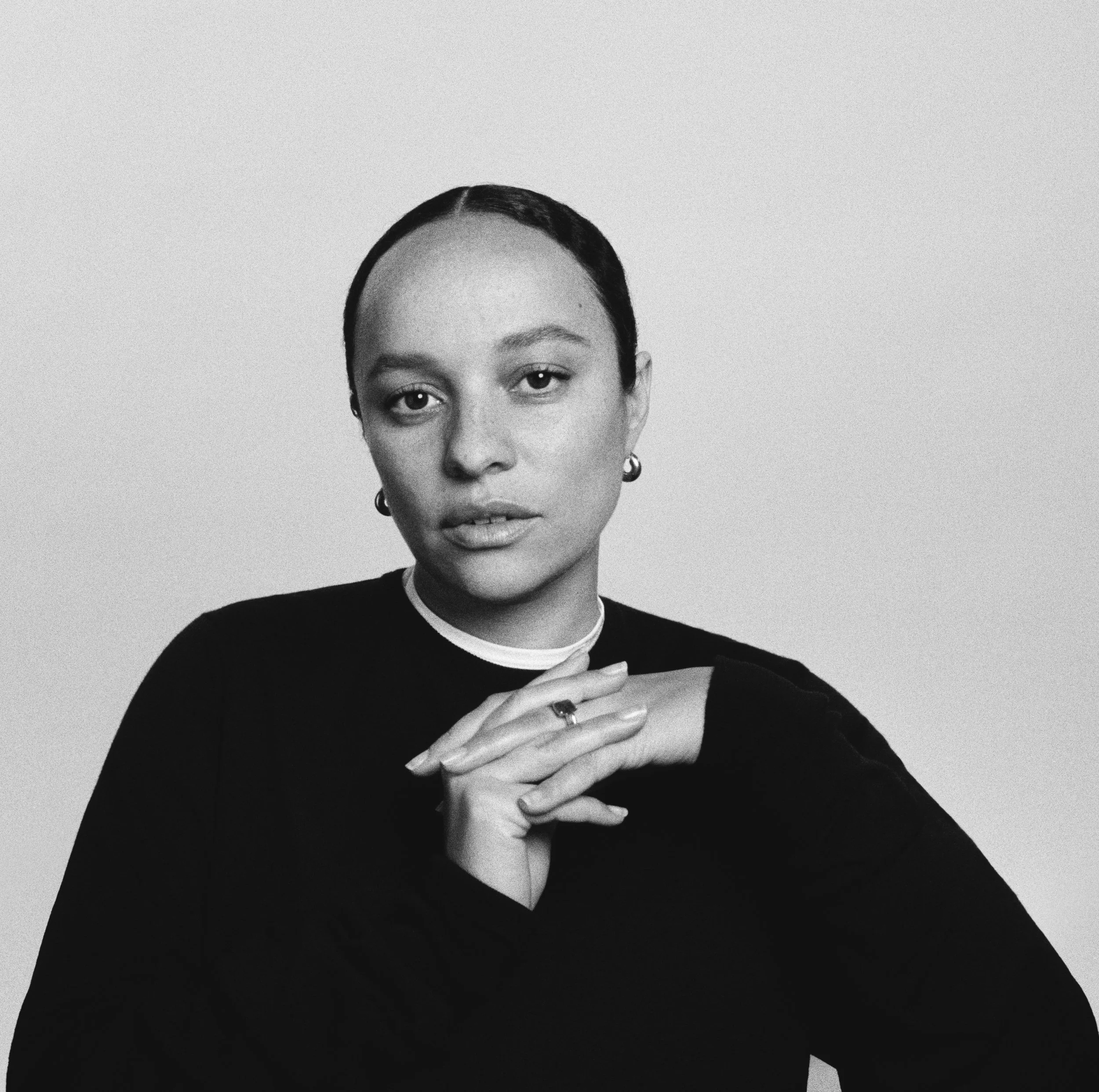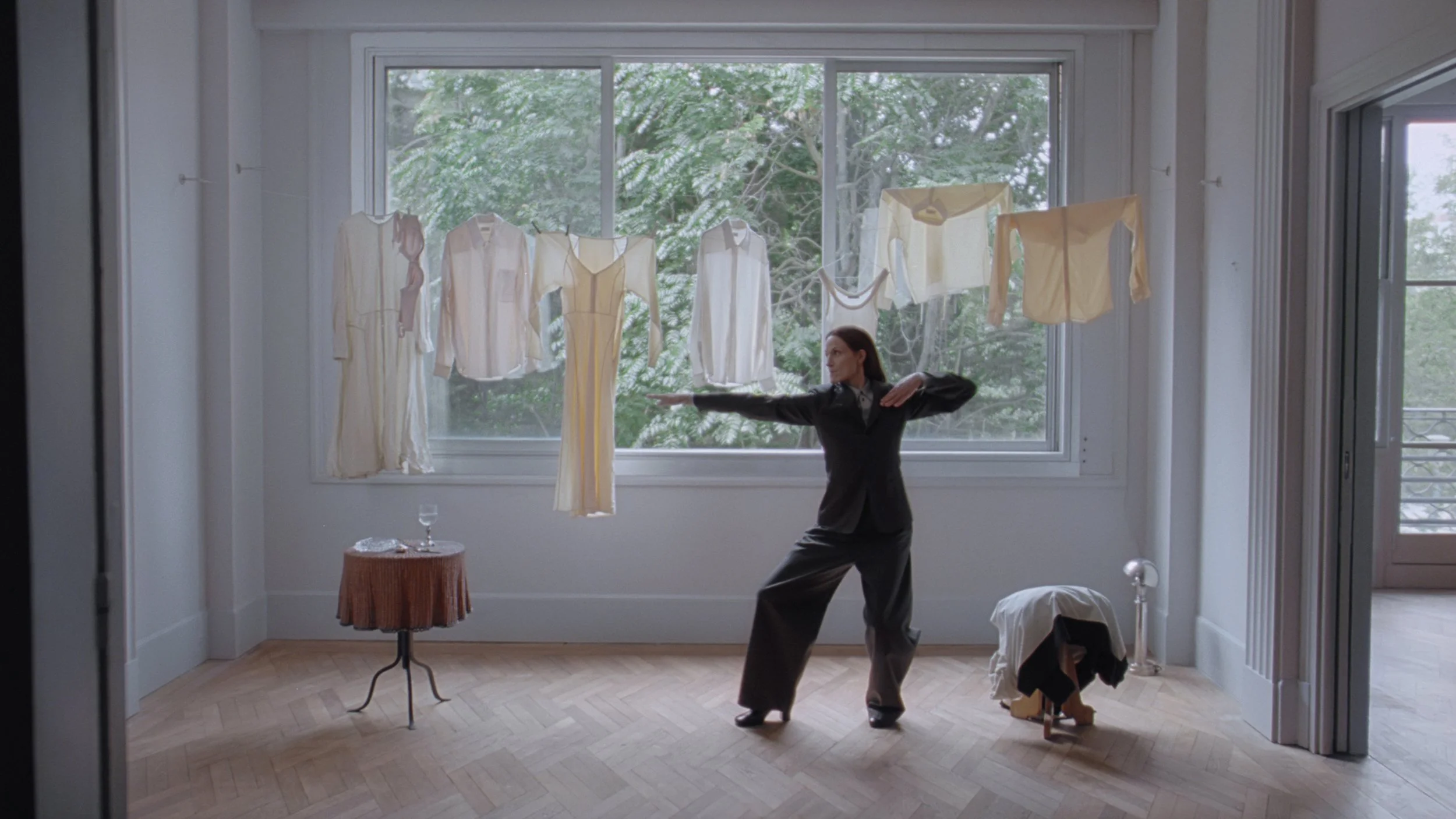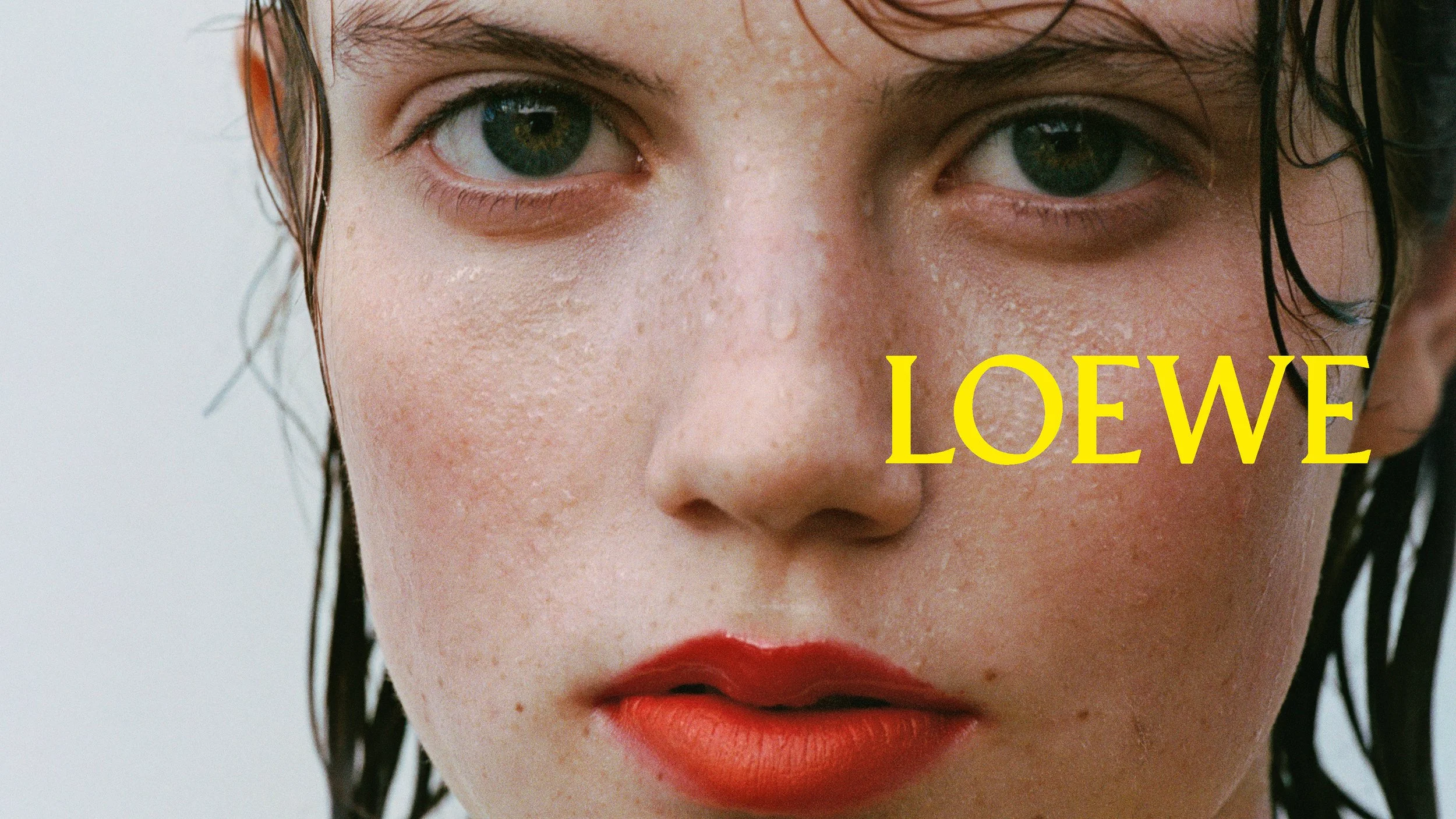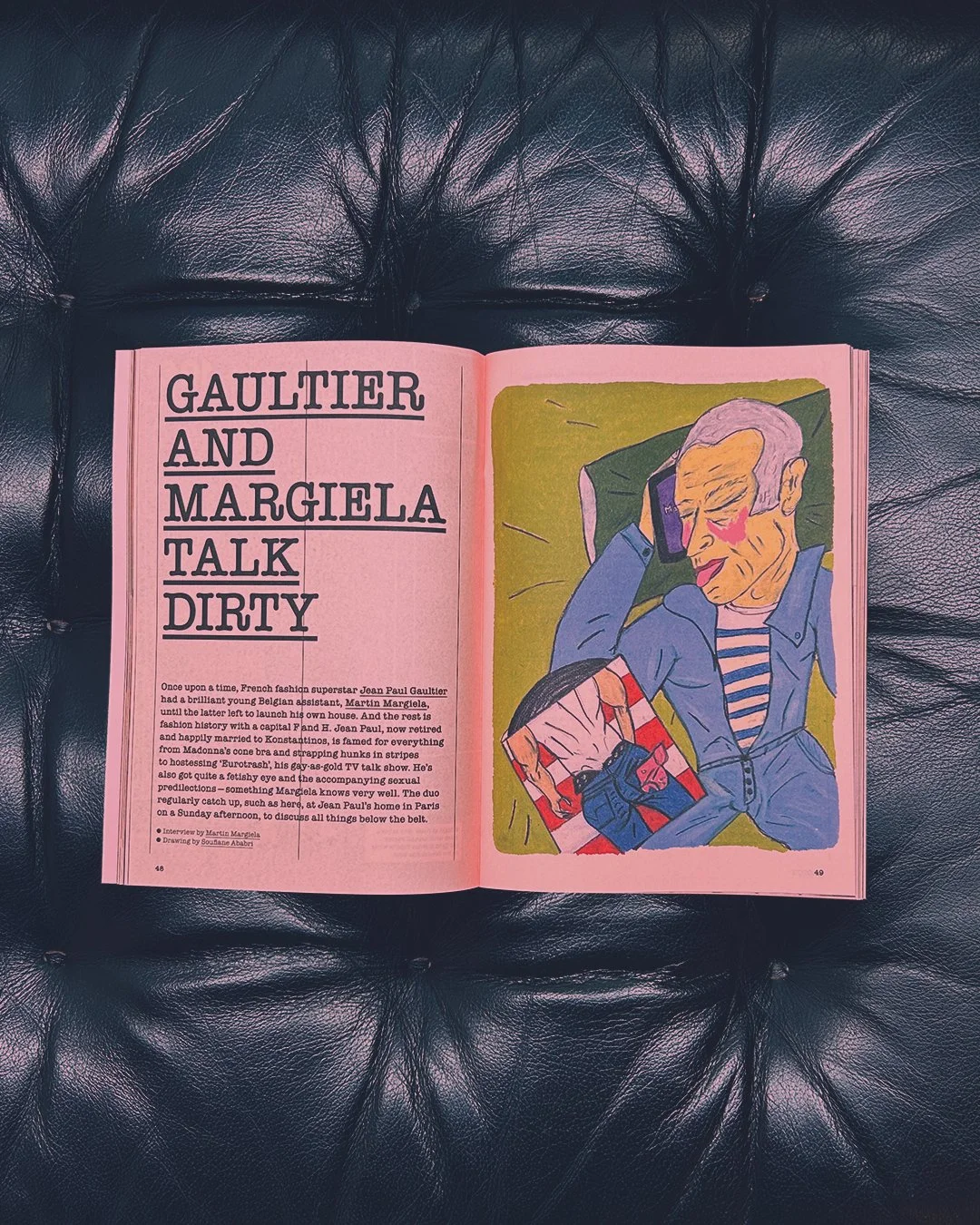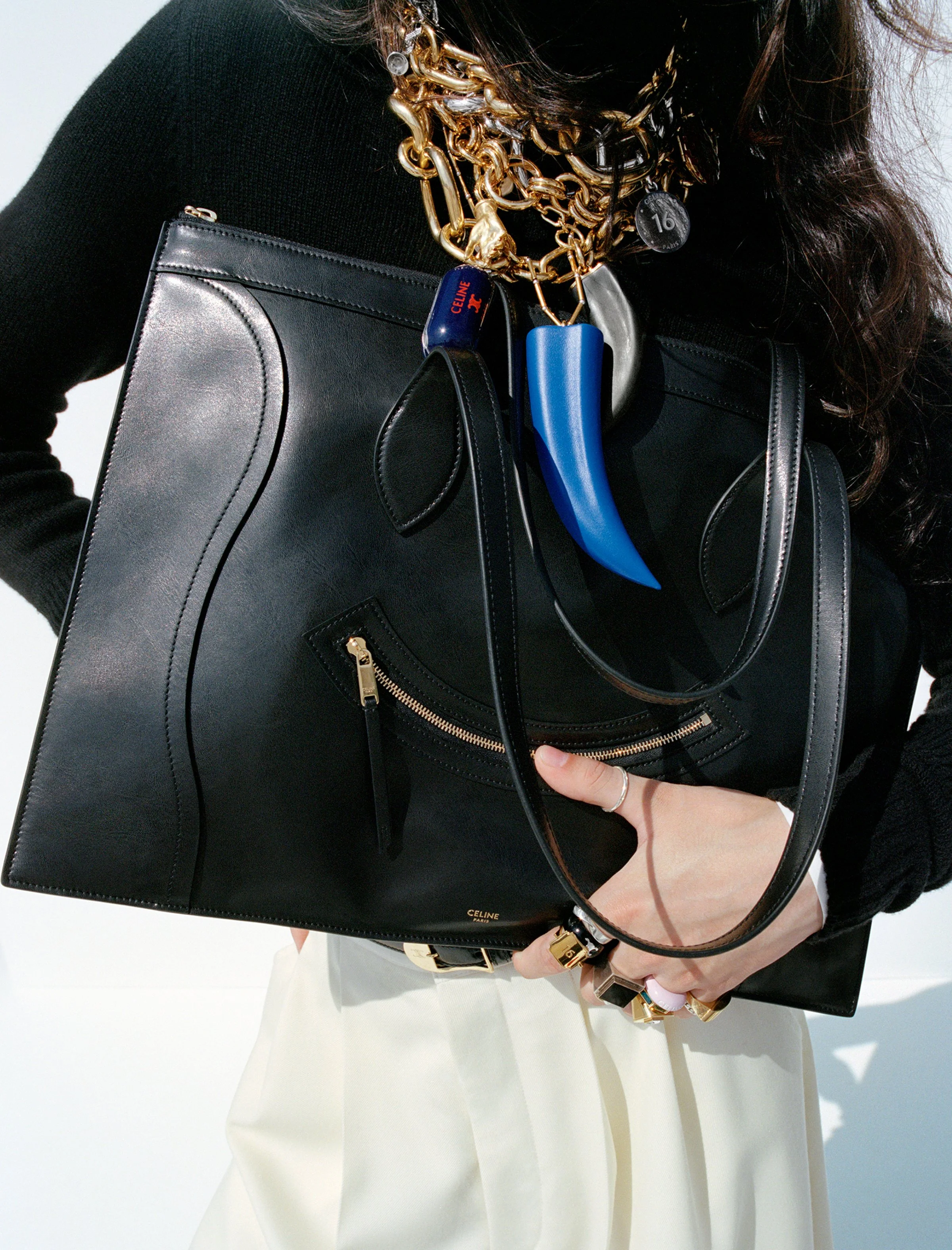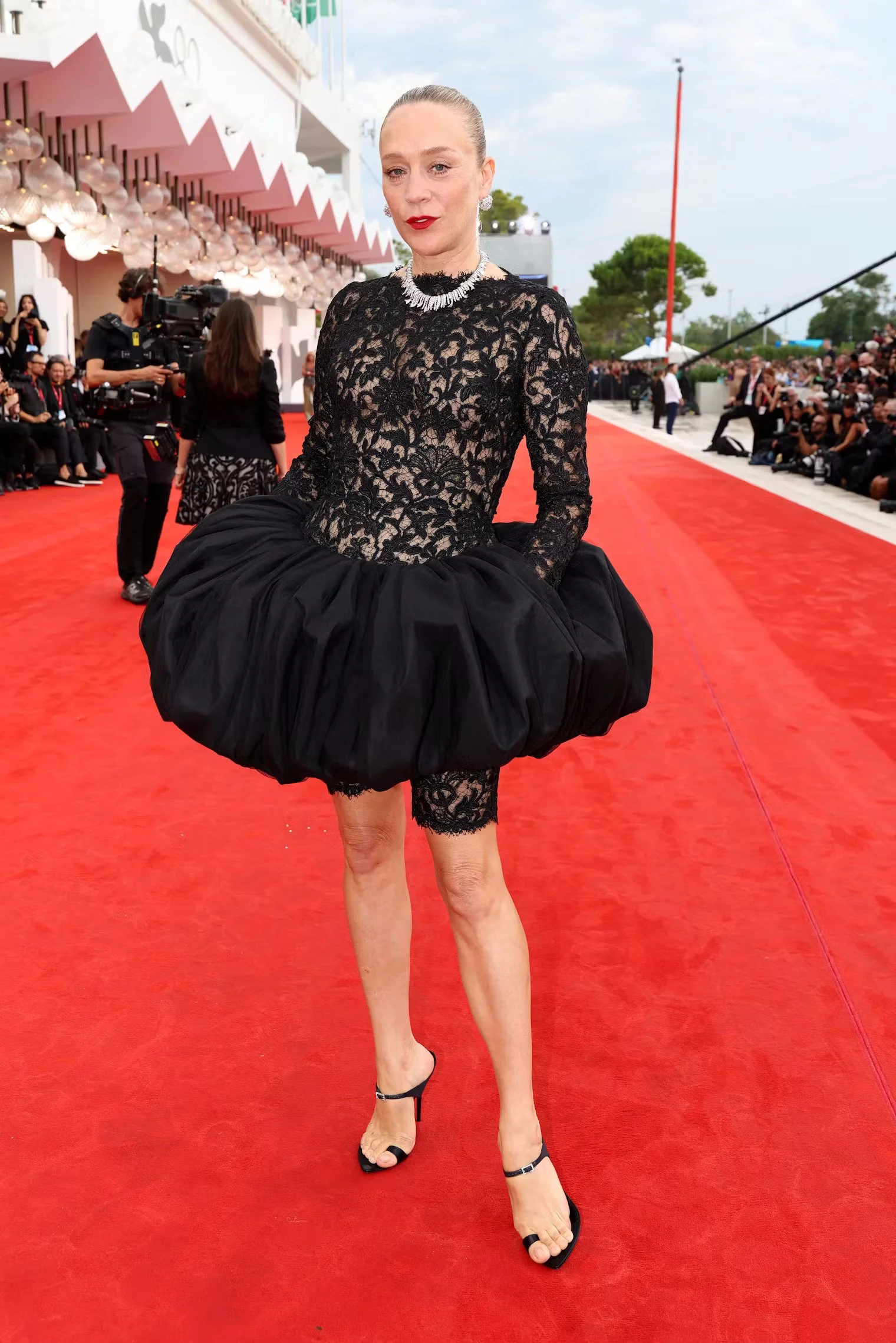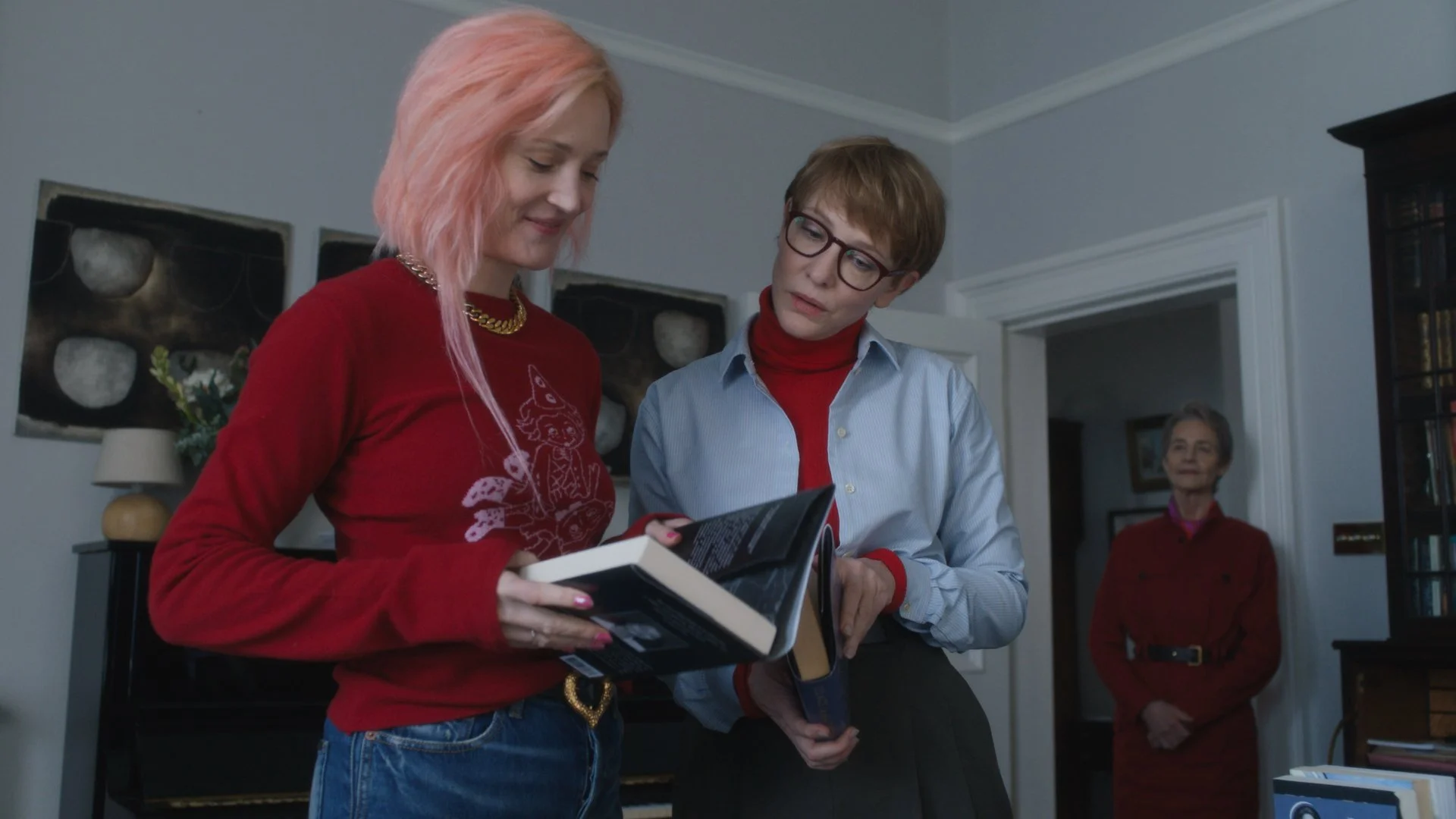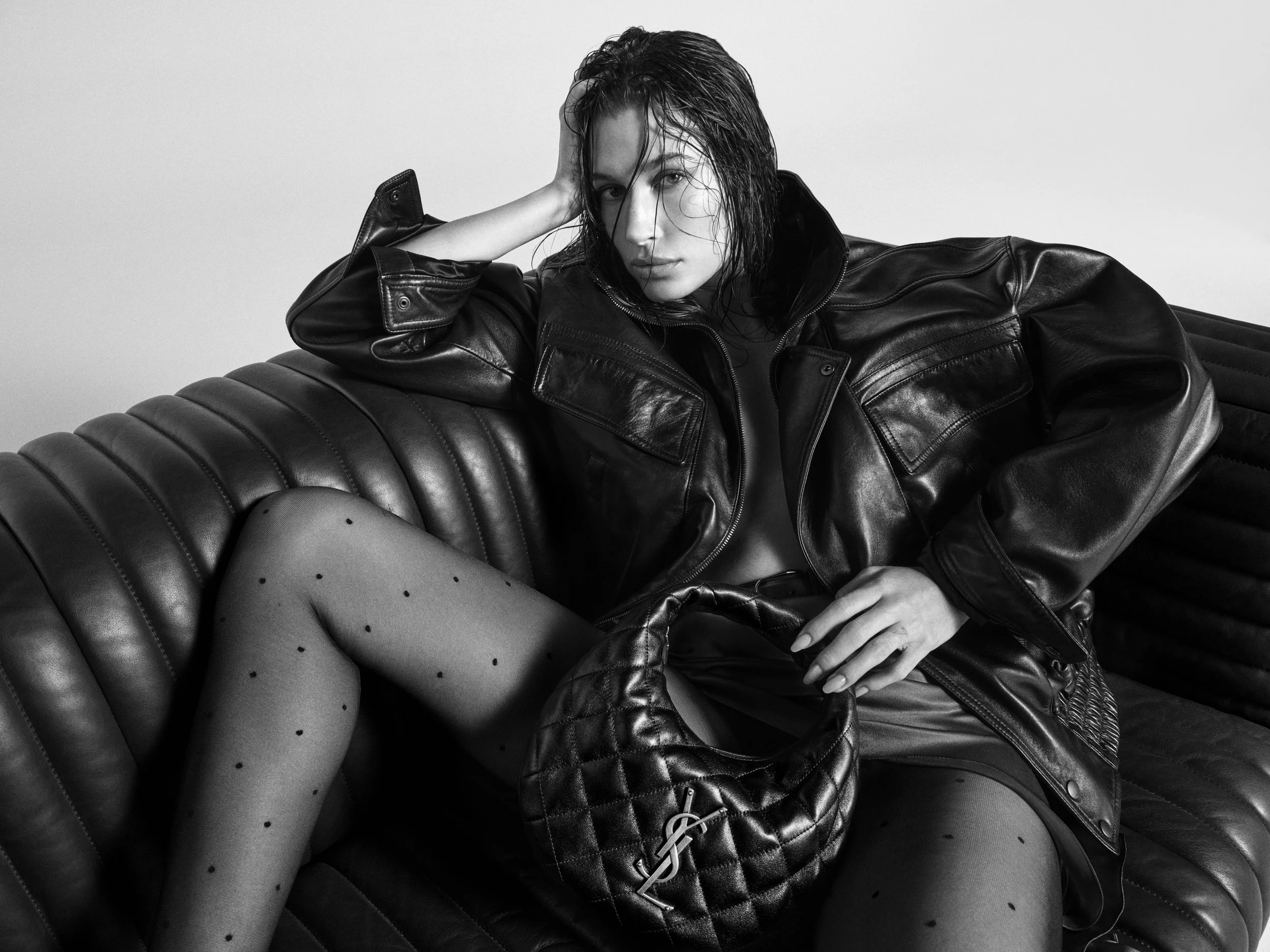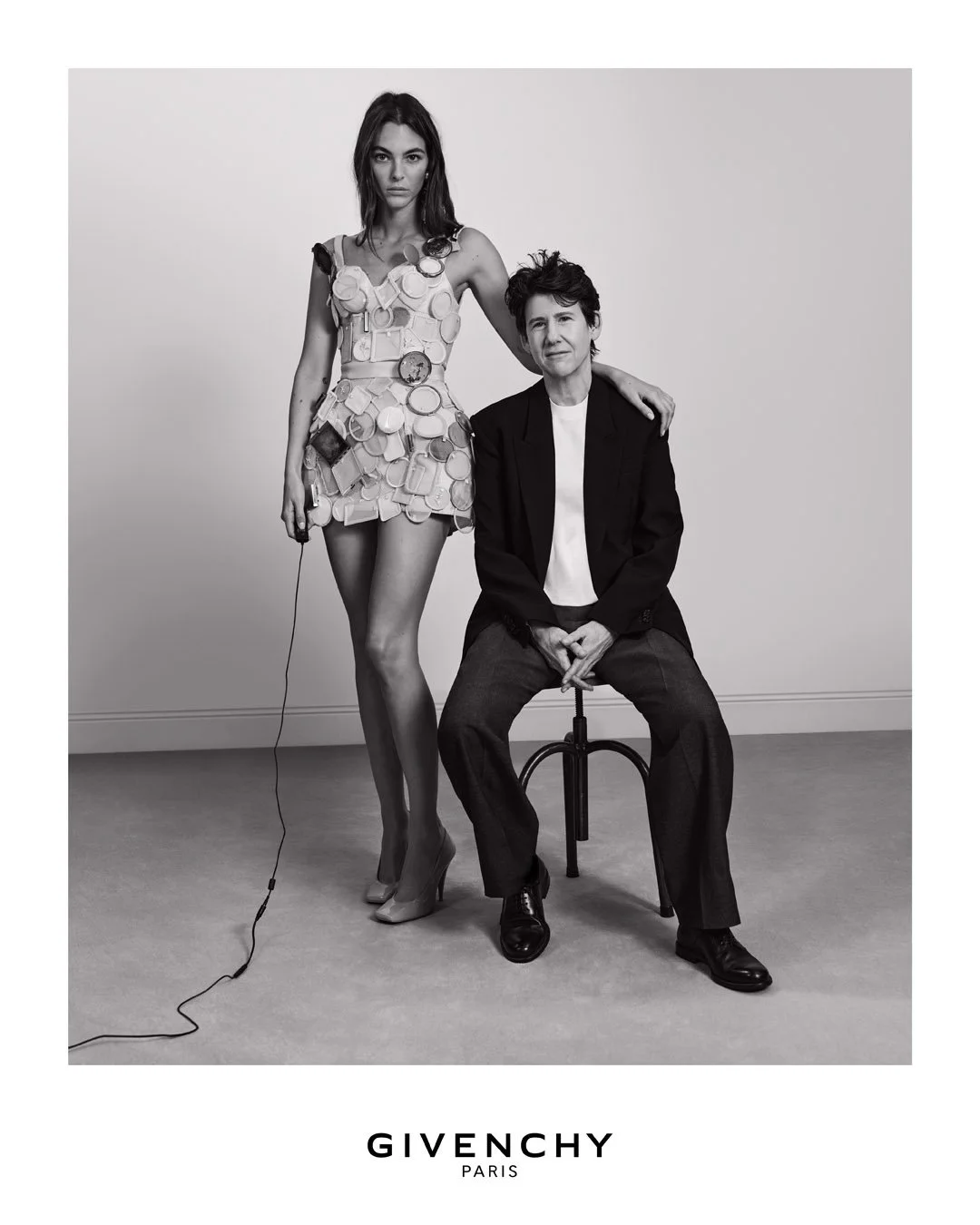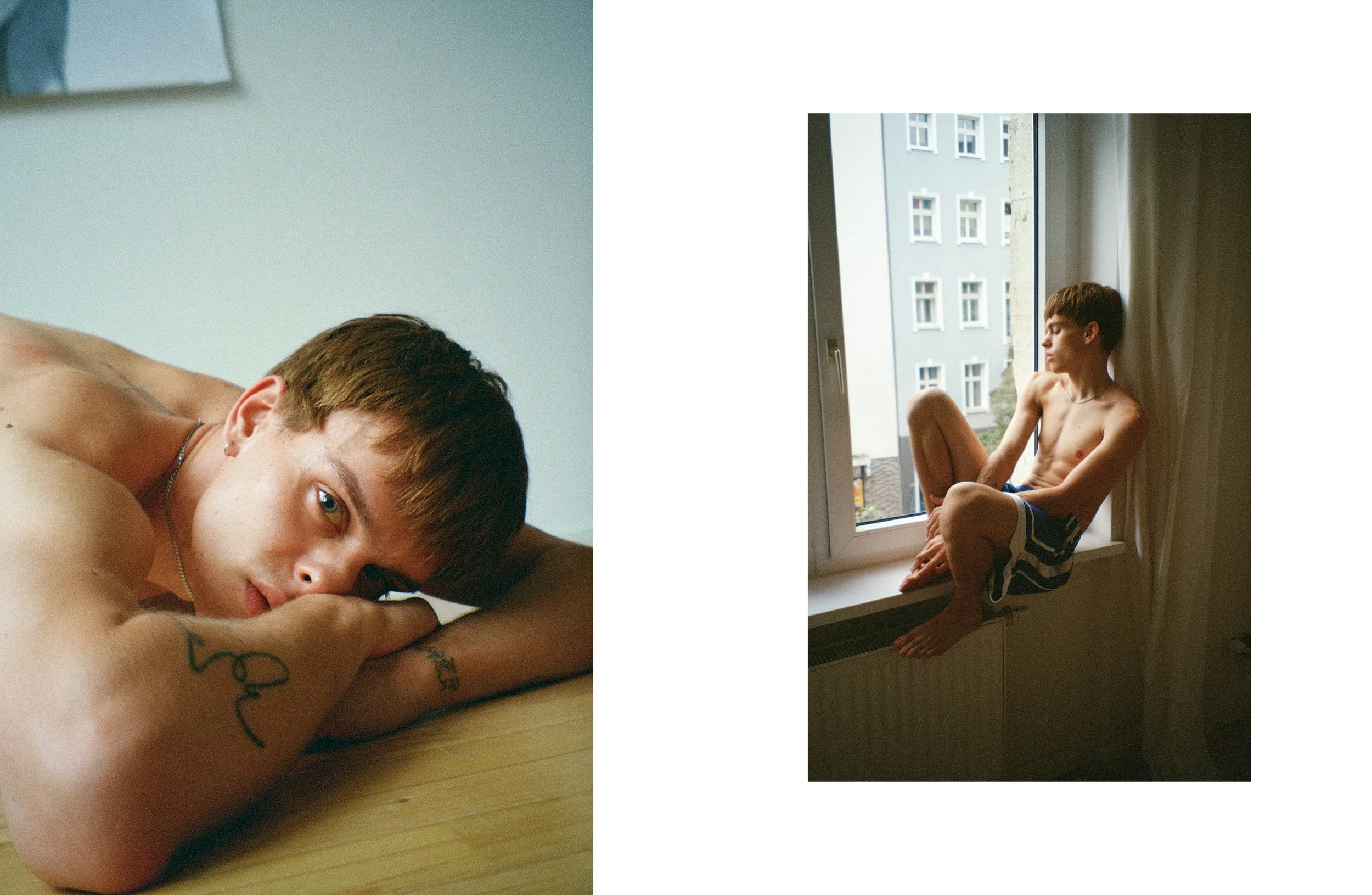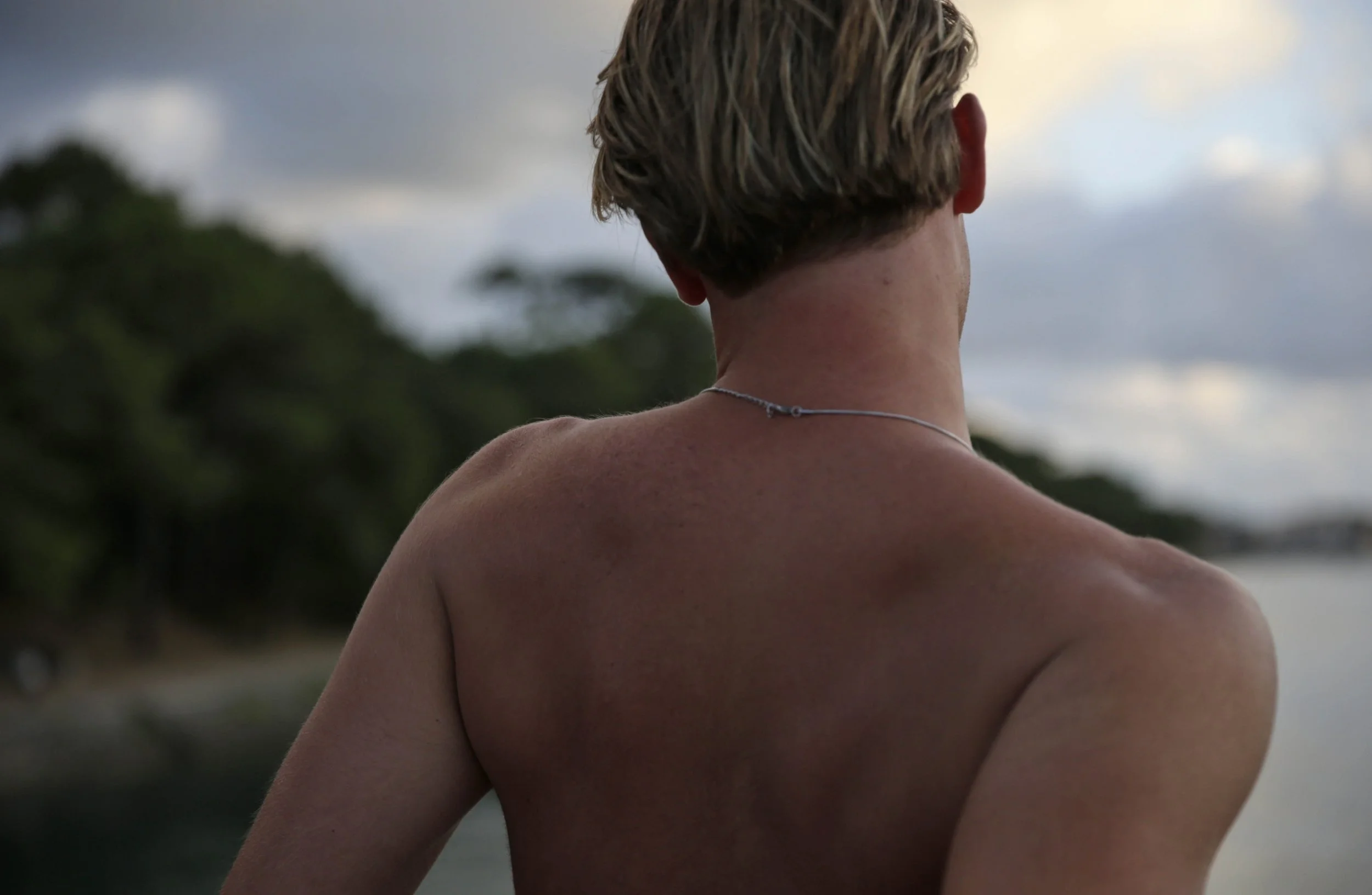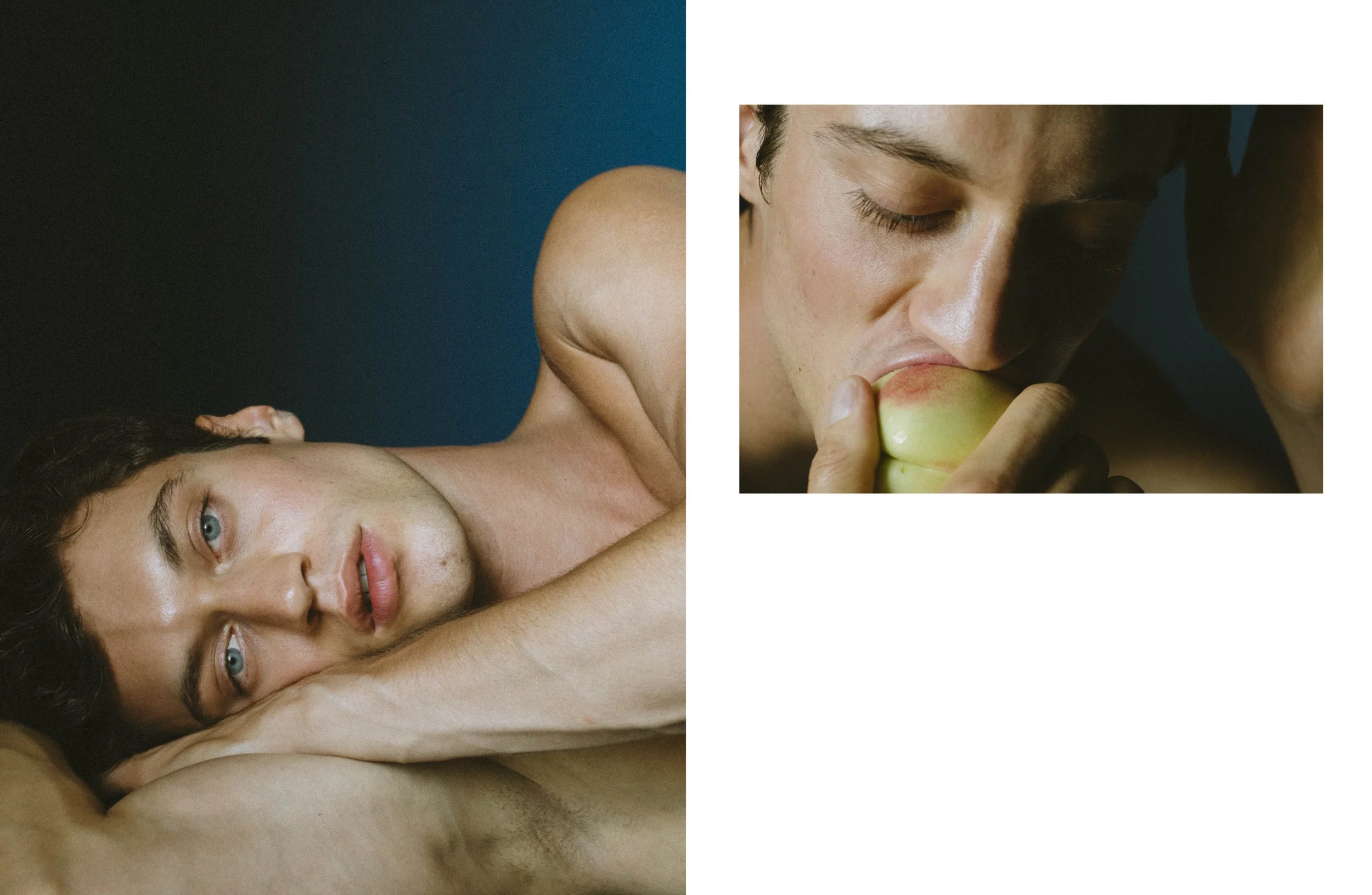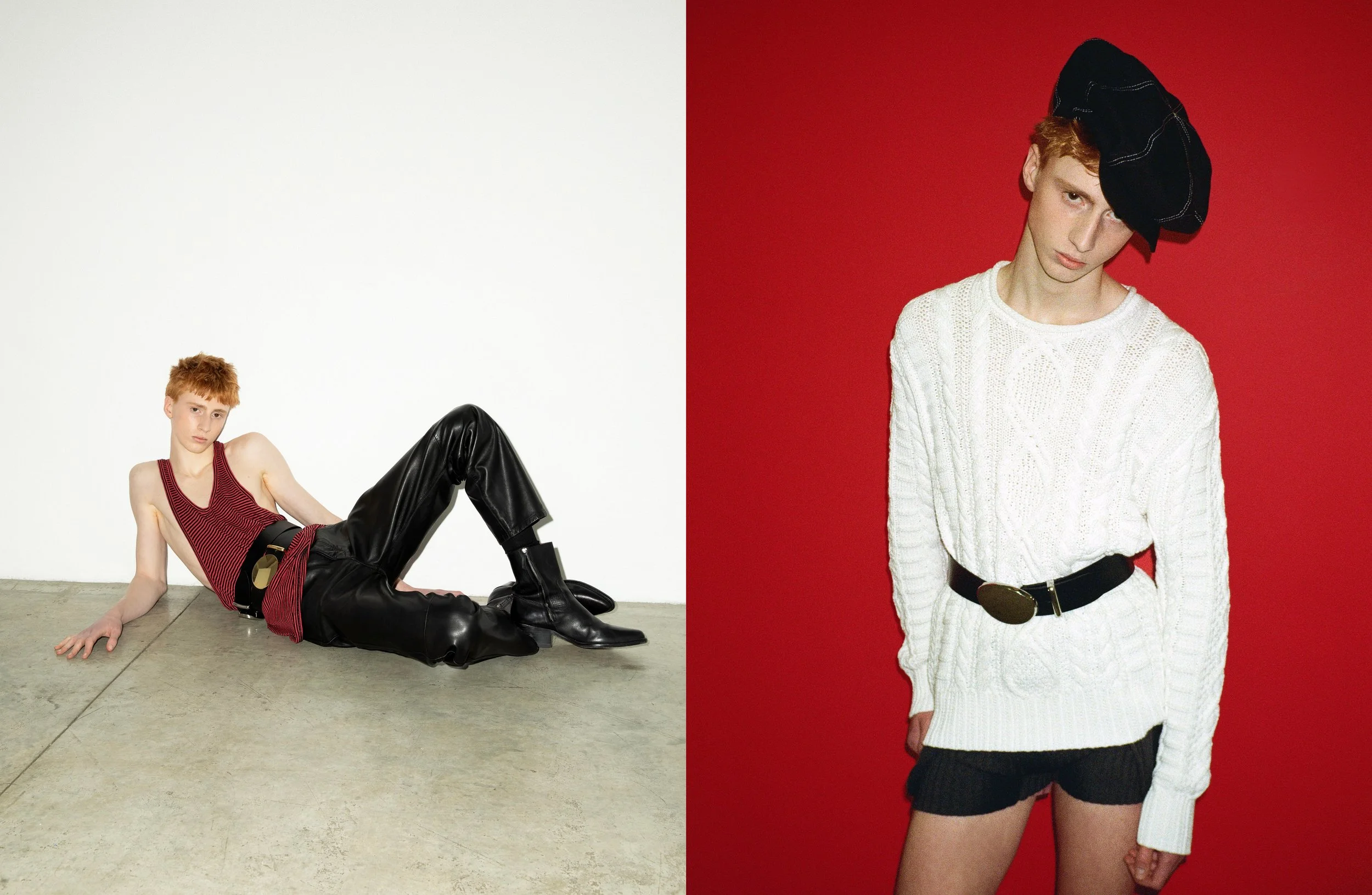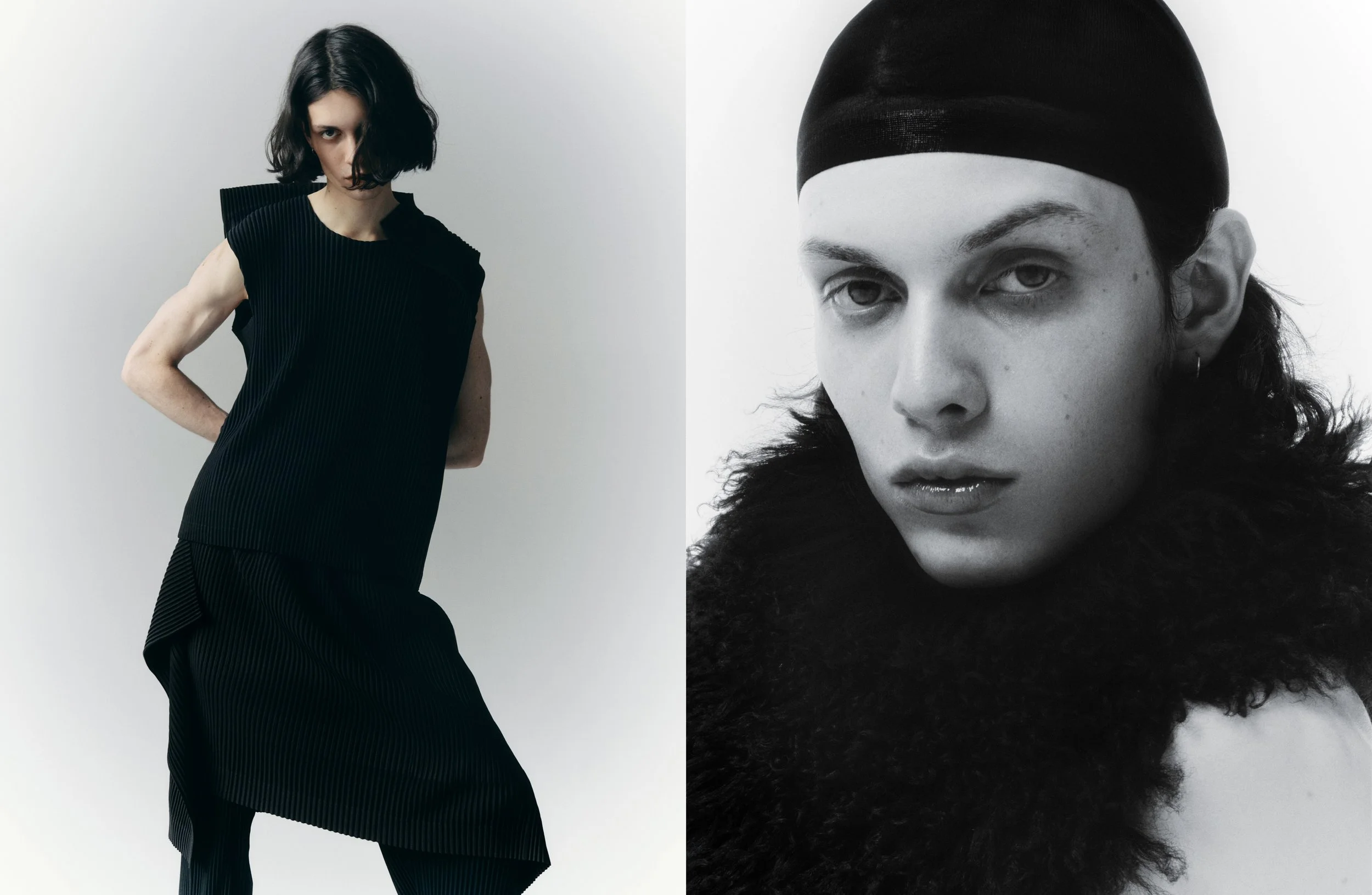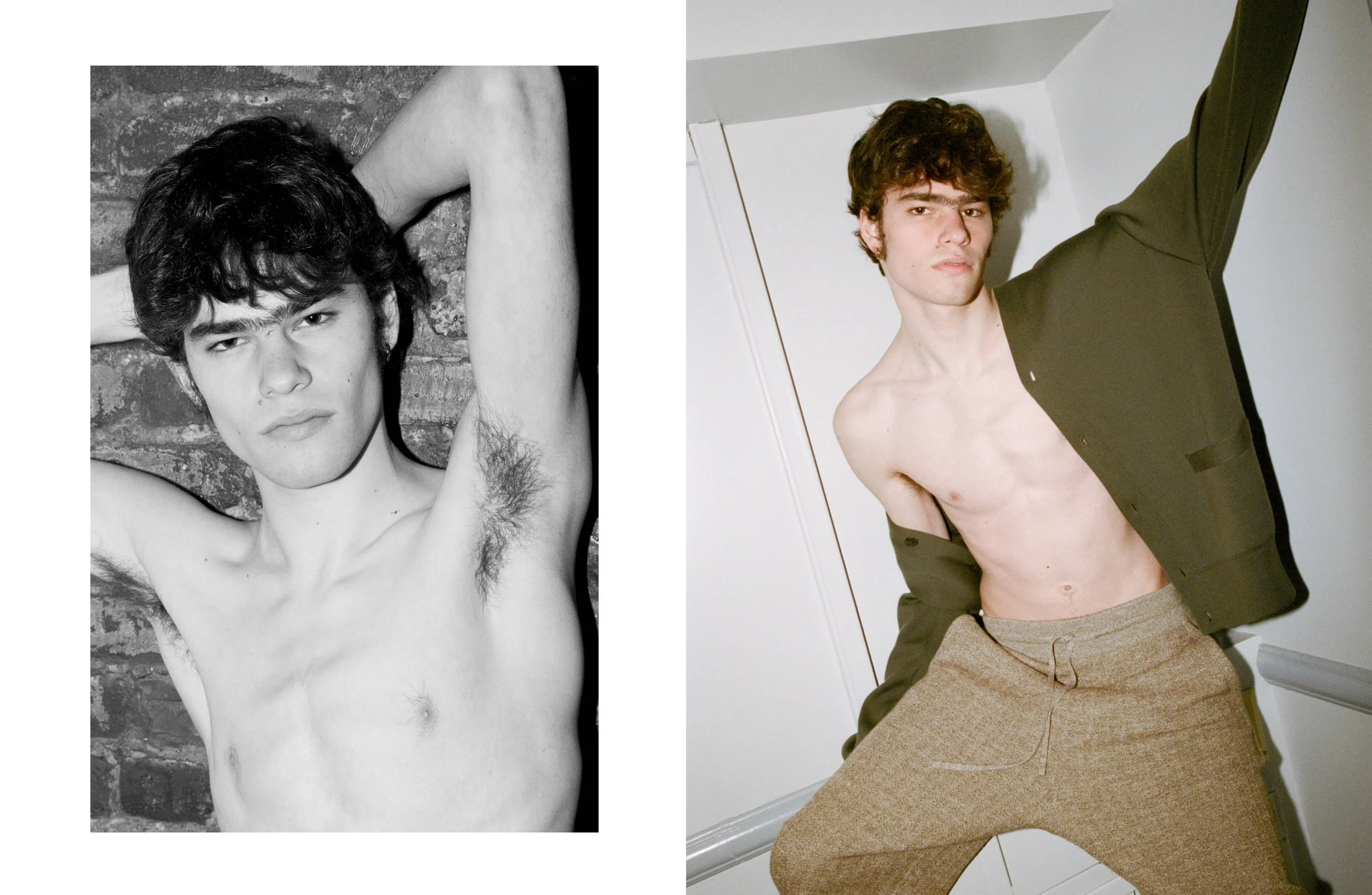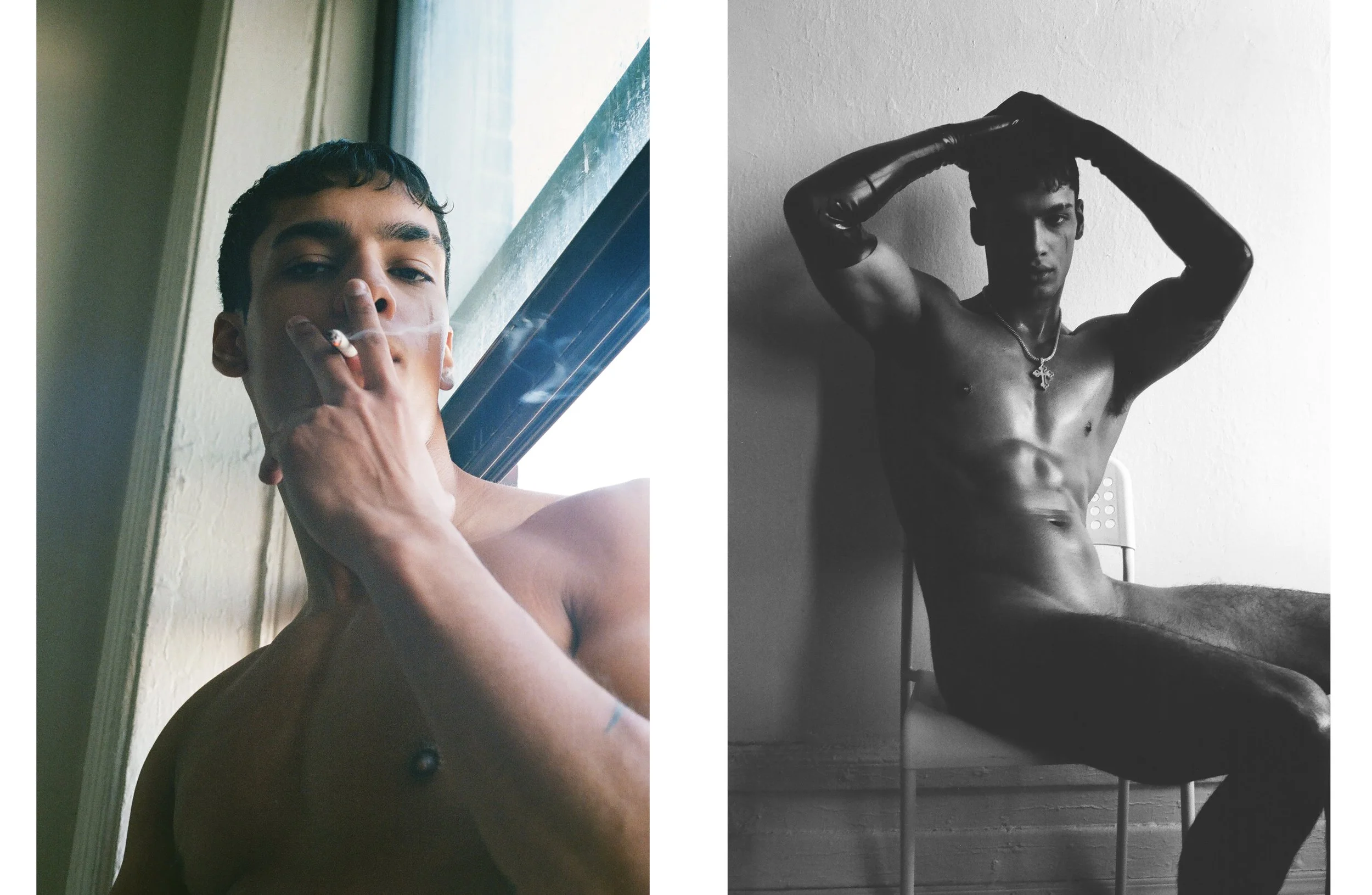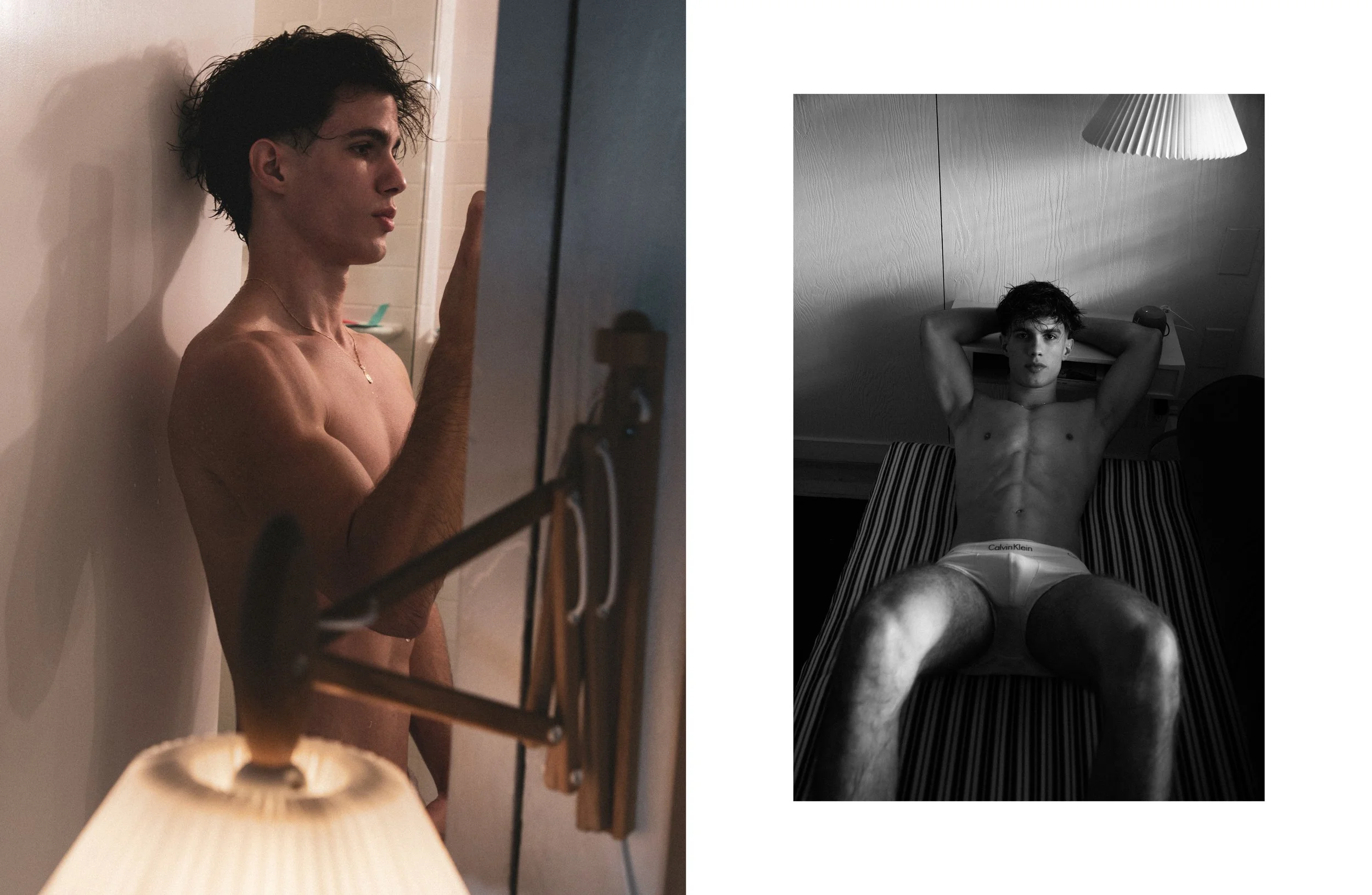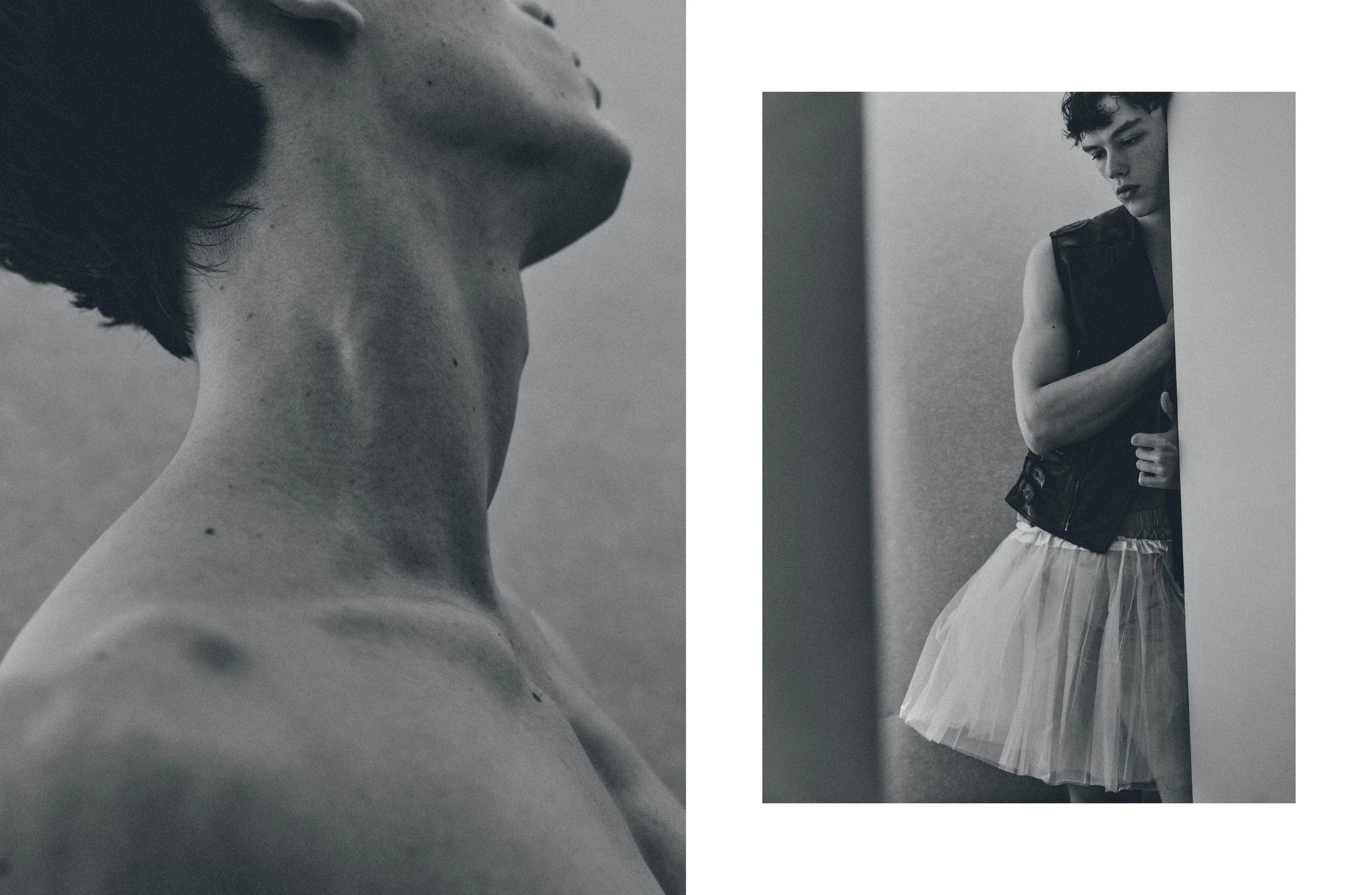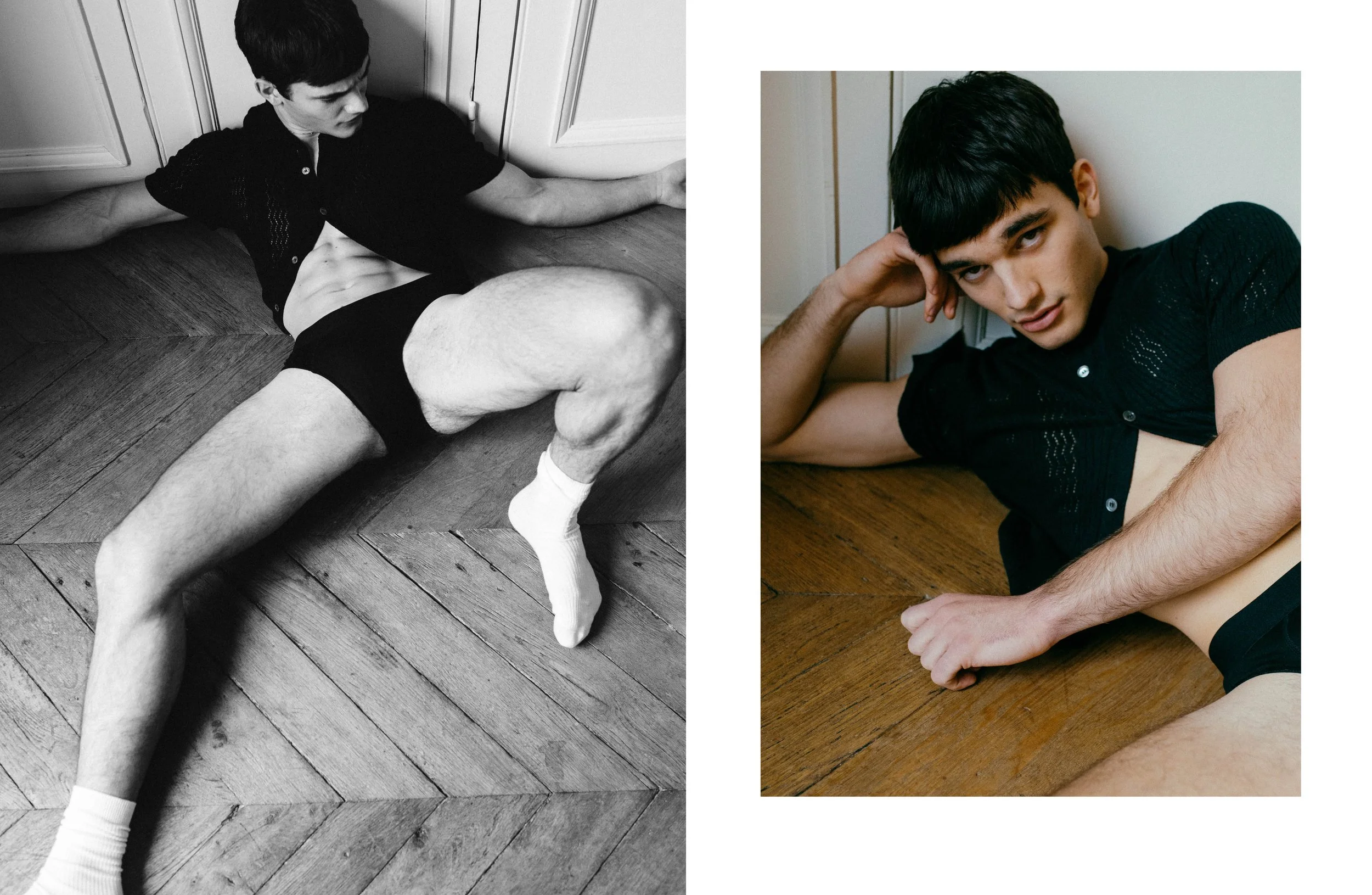Paris has a legacy of designers that push the function of fashion to the limit, weaponising its form as language. The generation of Japanese designers that invaded the city in the 80s has left its mark. Of course, throughout the decades, the legacy has mutated, congealed, expanded, sharpened, deflated and reinflated. Hodakova is a brand that speaks to that tradition. Her presence in the city is refreshing. Unlike those that came before it, its medium isn’t limited to clothing alone. In Spring/Summer 2026, Ellen Hodakova Larsson manipulates books, pillows, leather bags, metal, raffia, and so many other materials for the sake of her expression.
Given the designer's reputation for experimentation, the collection opens with looks that are surprisingly wearable, almost simple at first glance. Further inspection reveals double waistlines – one fictitious, another real – capes made from suiting, wool jumpsuits with pockets that lead straight to the body. Eventually, the idiosyncratic sound of Larsson’s pieces is heard, even through the music that fills the venue. Clanky rings grow louder as metal structures are utilised as hats, skirts, and ponchos. This season felt particularly architectural.
It wasn’t just a personal hunch. Backstage, the designer explains some of her inspirations. “I was trying to relate to this method of making roofs through straw; it’s such an old traditional way of doing it, but I was trying to bring it to modernity.” The final section of the collection spoke to this intent. Straw was first fitted to the body, woven to become a mini dress, but it eventually took over the bodies of those who wore it. By the final look, it had grown completely outside of it, forming a large triangular shape that engulfed the catwalk.
Her materiality is inspiring. It doesn’t just inform the textures the designer creates, it dictates their silhouettes. Shift dresses are restrictive in raffia, bending begrudgingly to the model's movement. Books sway open and shut in the hem of an otherwise simple dress. It wasn’t the first time she’s worked with books, but it’s certainly the most significant. “They’re all old books about Swedish history,” she relates. When asked how it was to work with books, she’s comedically sincere: “Heavy.”
Domesticity seemed to be a focal point of the collection. Dresses were made, and often were entirely made, of pillows. Elsewhere, a short dress was made with colourful socks that resembled animal plushies. This time it’s pure speculation. Larsson leaves it up to the imagination. “There’s a lot of undertones that can be read by themselves, and it's interesting to see how people see them.” Hodakova refuses definition as much as it invites interpretation.
Words by Pedro Vasconcelos
